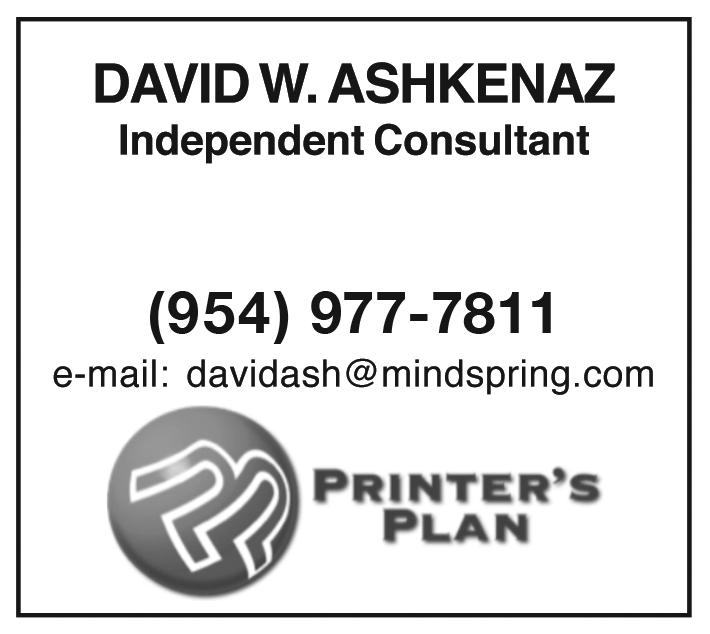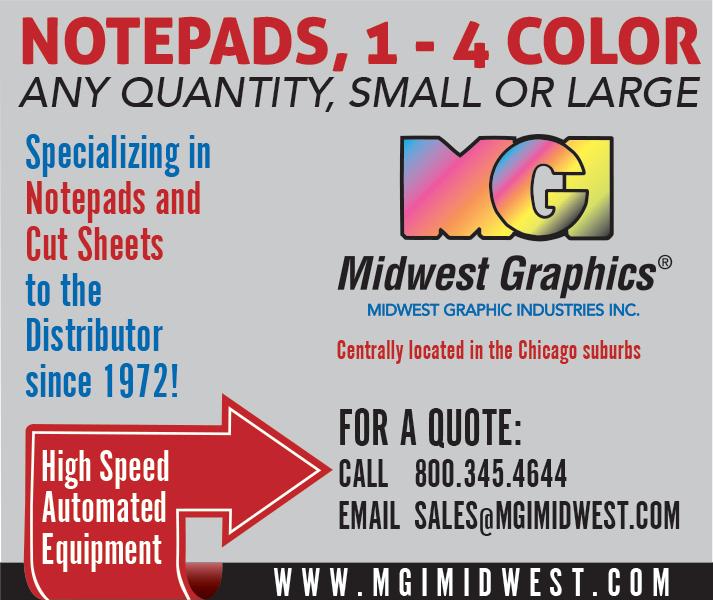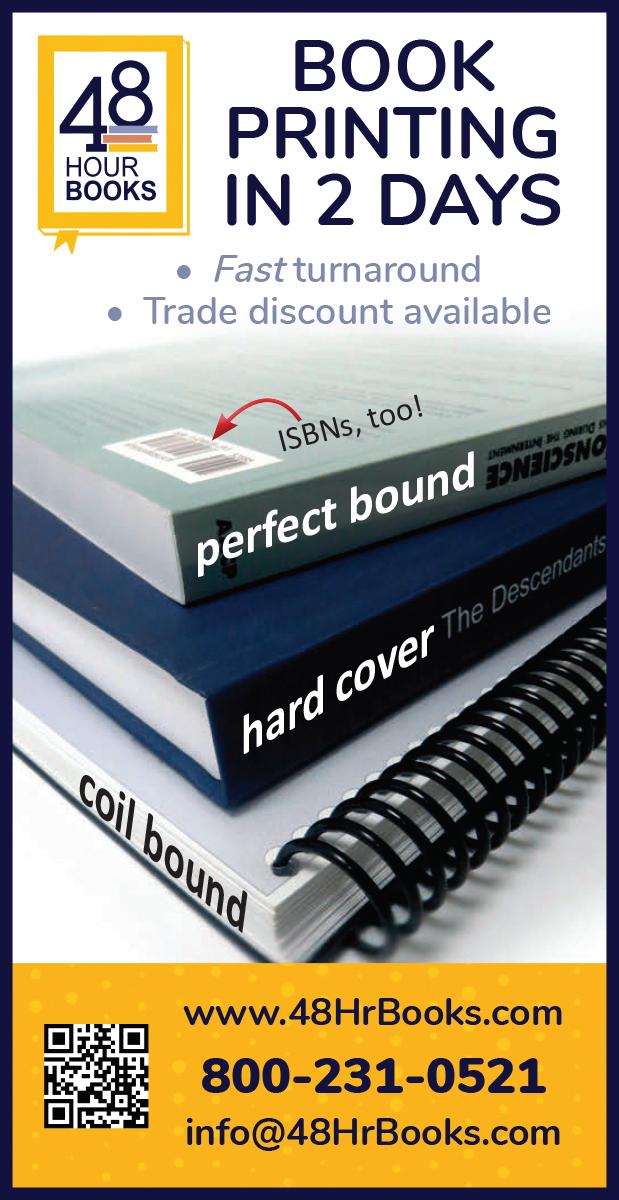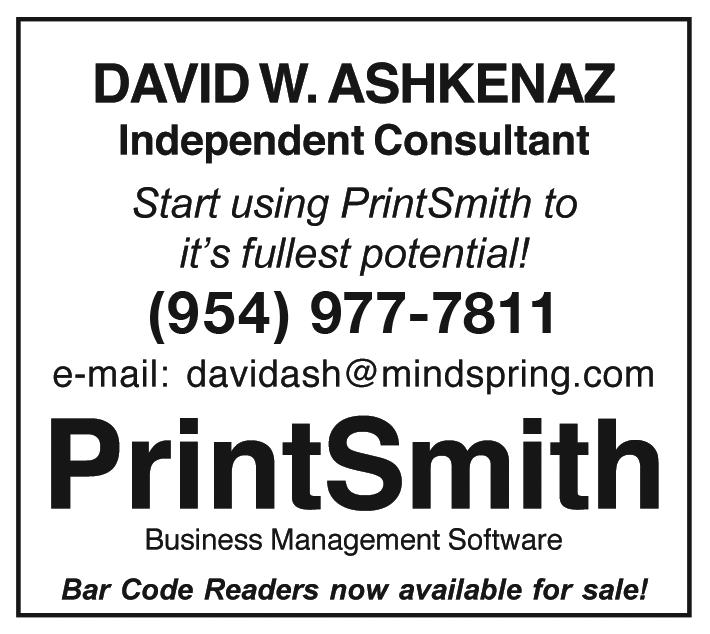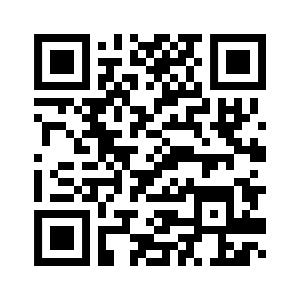Issue Three 2023 Finishing & Embellishment



National Print & Sign Owners Association (NPSOA) is an organization dedicated to serving the needs of sign and print owners across the country.


1. ACCESS TO INDUSTRY RESOURCES: Take advantage of a wide range of industry resources including: educational materials, best practices, & ample networking opportunities. Stay up-to-date with the latest trends and techniques within the industry and grow business.
2. COST SAVINGS: Exclusive discounts on products and services from a variety of industry partners including: suppliers, manufacturers, and service providers. These cost savings can help improve profitability and stay competitive in a challenging market.
3. COMMUNITY AND SUPPORT: Connect with other professionals in the industry, share ideas and experiences, and build relationships that can help nurture business success.
If you are an owner, you need to join!
npsoa.org/members/join-renew-npsoa/

We are happy to present the first findings from our landmark “Taktiful/WhatTheyThink 2023 Specialty Digital Ink and Toner Embellishment Study.” As this issue goes to press, we are digging into the vast amounts of data (and really good data) from our survey. You can find some of the preliminary results in this issue’s “Printing Pulse.”
Elsewhere in this issue, Kevin Abergel presents some user success stories on “creating memorable tactile experiences,” while Trish Witkowski guides us through the various embellishment and finishing technologies available at all levels.
David Zwang looks at embellishments in packaging, and also explores flexible packaging and the potential replacement of plastic with paper.
Speaking of plastic, Cary Sherburne profiles a new start-up called Solutum, which is developing a revolutionary material that can be used to create a range of flexible packaging with versatile (read: more sustainable) end-of-life options—including simply dissolving in water.
Cary also explores new revenue opportunities for commercial print and display graphics businesses in direct-to-garment printing services. It may sound intimidating, but many of these companies are already printing on fabric for soft signage. It’s not a big leap to take it to the next level by printing directly on garments or using transfer technologies like dye sublimation and direct-to-film to decorate all kinds of blanks.
Heidi Tolliver-Walker takes a look at some findings from the USPS’s “Generational Research Report,” which shows who’s reading what and what elements of direct mail are most important to which generations. As she says, “Think of it as that generation’s direct mail fingerprint.”
We also offer a recap of some of the announcements and debut demonstrations from April’s ISA Sign Expo, the first Sign Expo held in Vegas since the Before Times.
Want to know what’s up with the cover? Check out our profile on Matt Redbear, creative director for Taktiful, and the potential of AI.





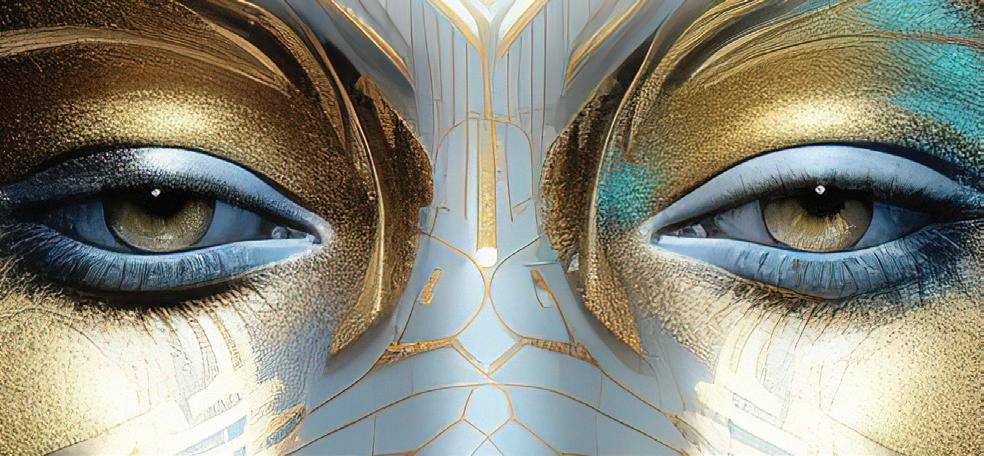





The EFI™ VUTEk® h3 and h5 superwide hybrid inkjet printers futureproof your business. Because we’ve reimagined, reinvented, reengineered and refined the high-volume, superwide-format hybrid inkjet platform from the ground up.


The result is a huge revolutionary leap that takes your business higher in terms of productivity, print quality, reliability, capability, and profits. All with the ease of use and LED environmentally-friendly benefits you expect from industrialbuilt VUTEk printers from EFI.
Let’s build your brilliant future. Together. Scan to learn how to make your future bright.

In the future we’ll look back to Hunkeler Innovationdays 2023 and say that’s when it happened. That’s when the print industry changed. That’s when offset met its match. That’s when inkjet broke the quality/speed barrier and became a viable option for virtually any application.
The inkjet category is growing quickly, and many manufacturers showcased envelope-pushing inkjet presses at Hunkeler. But the new product that pushed inkjet the farthest was our PROSPER ULTRA 520 Press.
Powered by our proprietary ULTRASTREAM continuous inkjet technology and using our standardsetting KODACHROME Inks which are the culmination of over 100 years of Kodak color science, the PROSPER ULTRA 520 Press offers performance that truly rivals offset: image quality of 200 LPI offset at 500 feet per minute, on thick and glossy papers. That’s performance no other inkjet press can match, no matter how other manufacturers spin their stories.
The PROSPER ULTRA 520 Press, like all digital solutions, requires less labor than offset, which is an important consideration as labor gets harder to find and run lengths shrink. What’s more, printers will get the PROSPER ULTRA Press’s breakthrough performance without the cost and supply risks of plates and the huge carbon footprint that goes with them. I know that sounds odd coming from one of the biggest plates suppliers, but our first priority is helping our customers be successful in the long run. And the PROSPER ULTRA 520 Press will help them be more productive, more versatile, more agile, more sustainable, more competitive and more profitable.
Digital technology has hit the tipping point. It happened with the launch of the PROSPER ULTRA 520 Press and KODACHROME Inks, which deliver a combination of high quality and high speed that truly rival offset. Kodak innovation has changed the print business — and there is no turning back.
Sincerely,
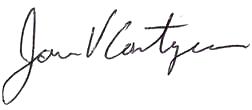 Executive Chairman and CEO
Executive Chairman and CEO

This issue’s edition of “Printing Pulse” offers a preliminary “sneak peek” at the results of the Taktiful and WhatTheyThink “2023 Specialty Digital Ink and Toner Embellishment Study.”
This study takes a deep dive into how current users of digital ink and toner embellishment technologies are utilizing them, what the response from customers has been, how satisfied print providers have been with the sales and profitability of these jobs, where the challenges lie, and their general feelings about the future of digital ink and toner embellishment technologies.
The survey was conducted online from February to April 2023, and the results are based on
115 usable responses from owners of these technologies using them in conjunction with digital printing equipment from Ricoh, HP Indigo, Xerox, Kodak, Oki, Heidelberg, Fujifilm and Xeikon.
The majority of users described themselves as either a commercial printer (offset and digital) or digital printer, with a smattering of specialty printers, label printers and packaging printers.
Respondents were predominantly U.S. businesses, with a few European and Canadian printers, and two or three from other regions such as South/Central America, Asia, Africa and Oceania.
There was also a very good balance of small, mid-size and large establishments.
In our annual “Printing Outlook” surveys, we have never found that print businesses see an overwhelming opportunity in adding digital embellishments (called “enhancements” on our survey)— at most, only 6% of survey respondents ever saw an opportunity in these technologies. We’ve always found this to be a missed opportunity.
But as we found in the “2023 Specialty Digital Ink and Toner Embellishment Study,” those print businesses that are actively selling and producing these finishing technologies are finding them a profitable value-added service for clients.
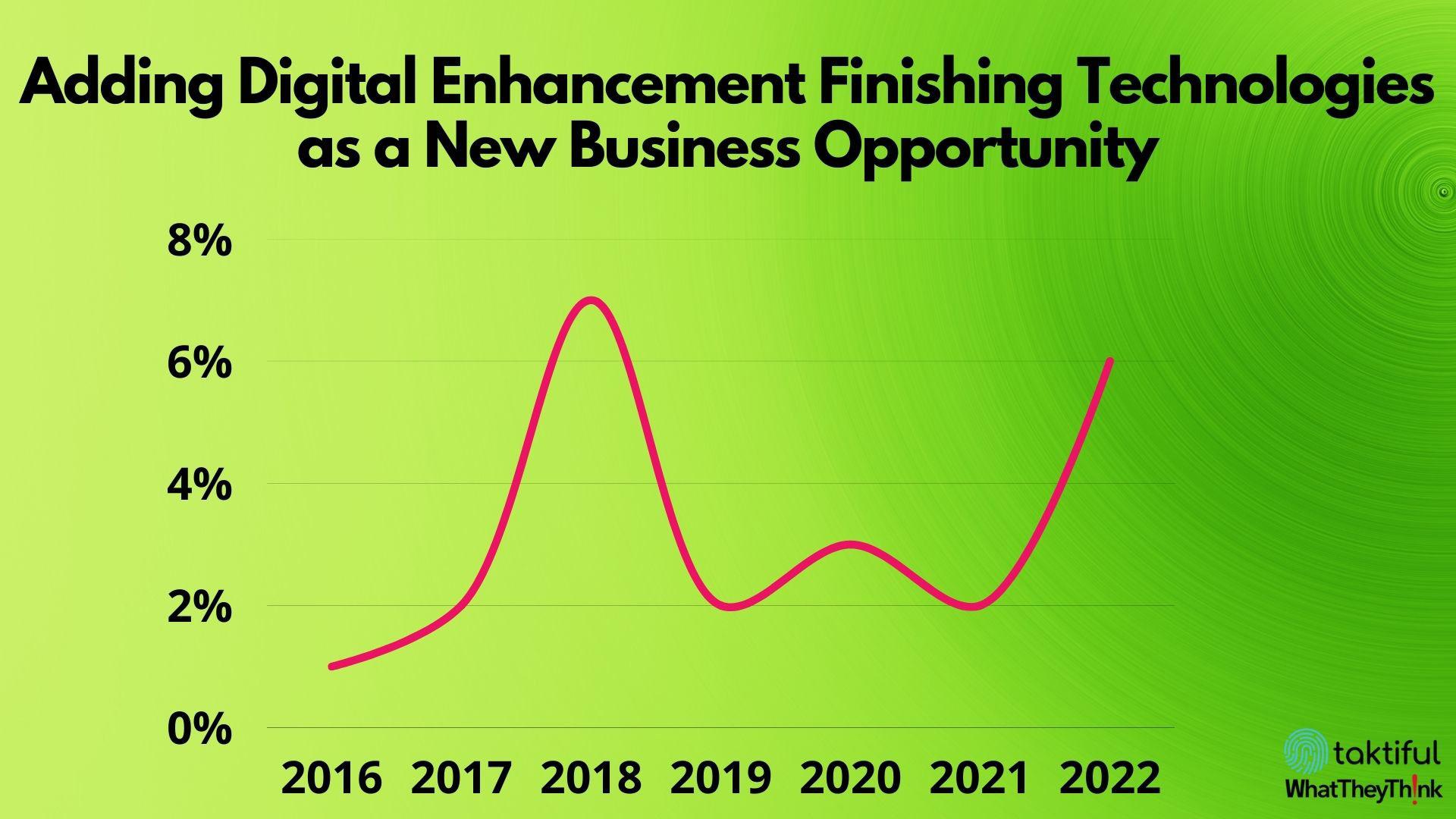
First, a little nomenclature. These techniques and technologies go by many names—embellishments and enhancements are the two we encounter most often. In our study, we refer to them as “specialty ink and toner capabilities,” which is how we’ll refer to them in the remainder of this article.
As it turns out, having specialty ink and toner capabilities be a profit center was the point of the investment in them. Four out of 10 (41%) survey respondents said that the main reason they added these capabilities was to generate more profit. One-fourth of respondents said that they added these capabilities due to specific client demand.

The capabilities are ensconced in these print businesses’ sales and marketing efforts— three-fourths (74%) of digital press owners who have speciality ink and toner capabilities find them valuable, 17% find them “extremely” valuable, 23% “very” valuable, and 34% at least “somewhat” valuable.
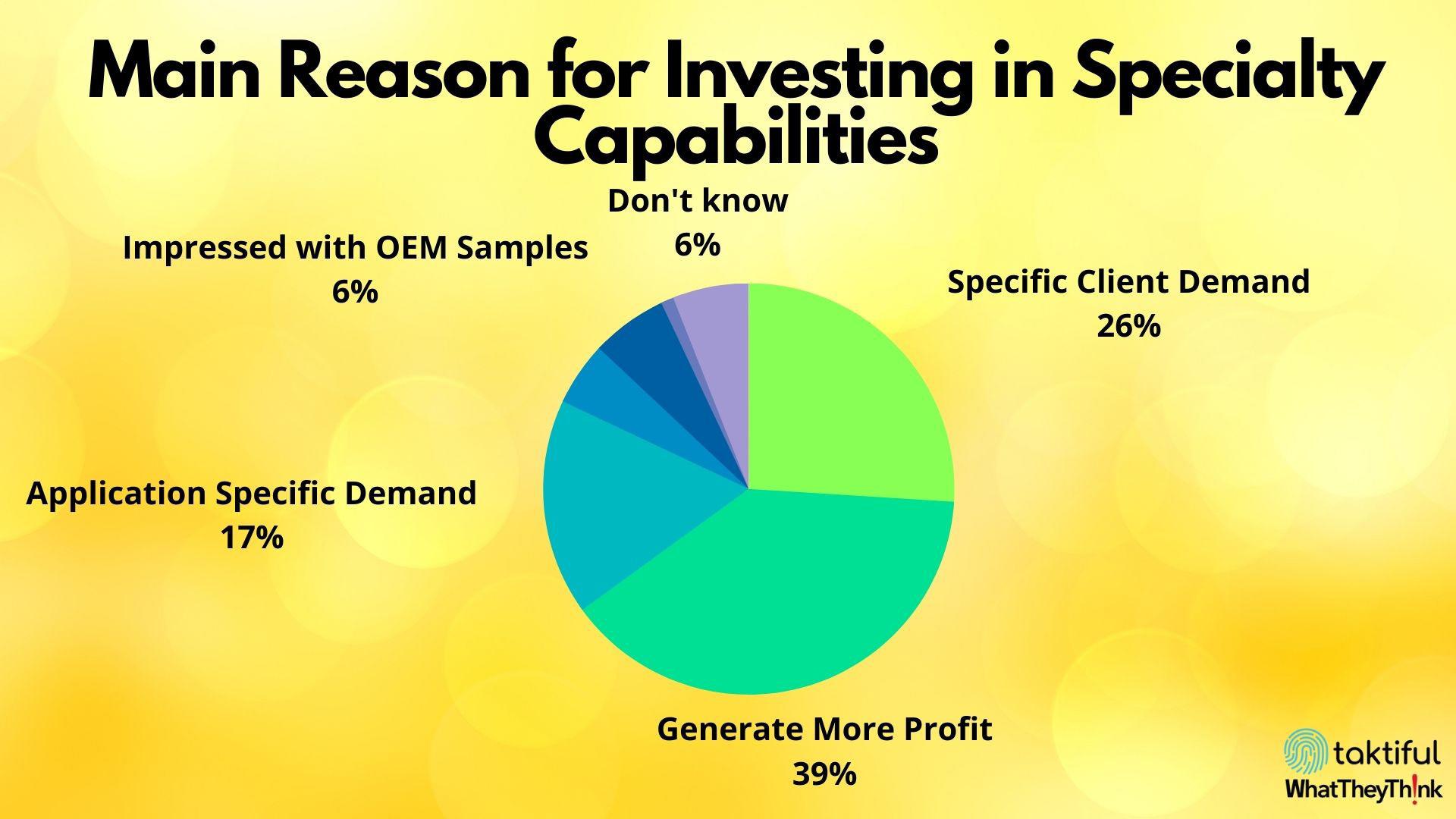
Ultimately, print businesses that have added specialty ink and toner capabilities are generally satisfied with both sales and profits of these jobs, but there is a bit of a disconnect between sales and profit satisfaction: more than one-half (55%) are satisfied (12% very satisfied) with the profits they make off these jobs, but 40% are satisfied (9% very satisfied) with the sales of these of these jobs.

So these jobs are profitable, but the bottleneck is in sales.
One big takeaway here is that there needs to be a greater concerted effort on the sales and mar-
keting side to get the word out about the value that these techniques can add to printed materials.
The write-in response to the “satisfaction with sales” question was, “The industry needs to educate marketing people on the opportunities available to them.” Indeed, this is one of the goals of the embellishment study. And this isn’t just academic: more than one-fourth of survey respondents (27%) said that specialty ink and toner jobs were “always” more profitable than regular CMYK jobs, while 36% said they “usually” are, and 23% said they were at least “sometimes” more profitable.

Print businesses find them valuable in no small part because clients are interested in them—three-fourths (75%) of respondents said that clients are at least somewhat interested in specialty ink and toner capabilities, 4% “extremely,” 26% “very,” and 45% “somewhat.”
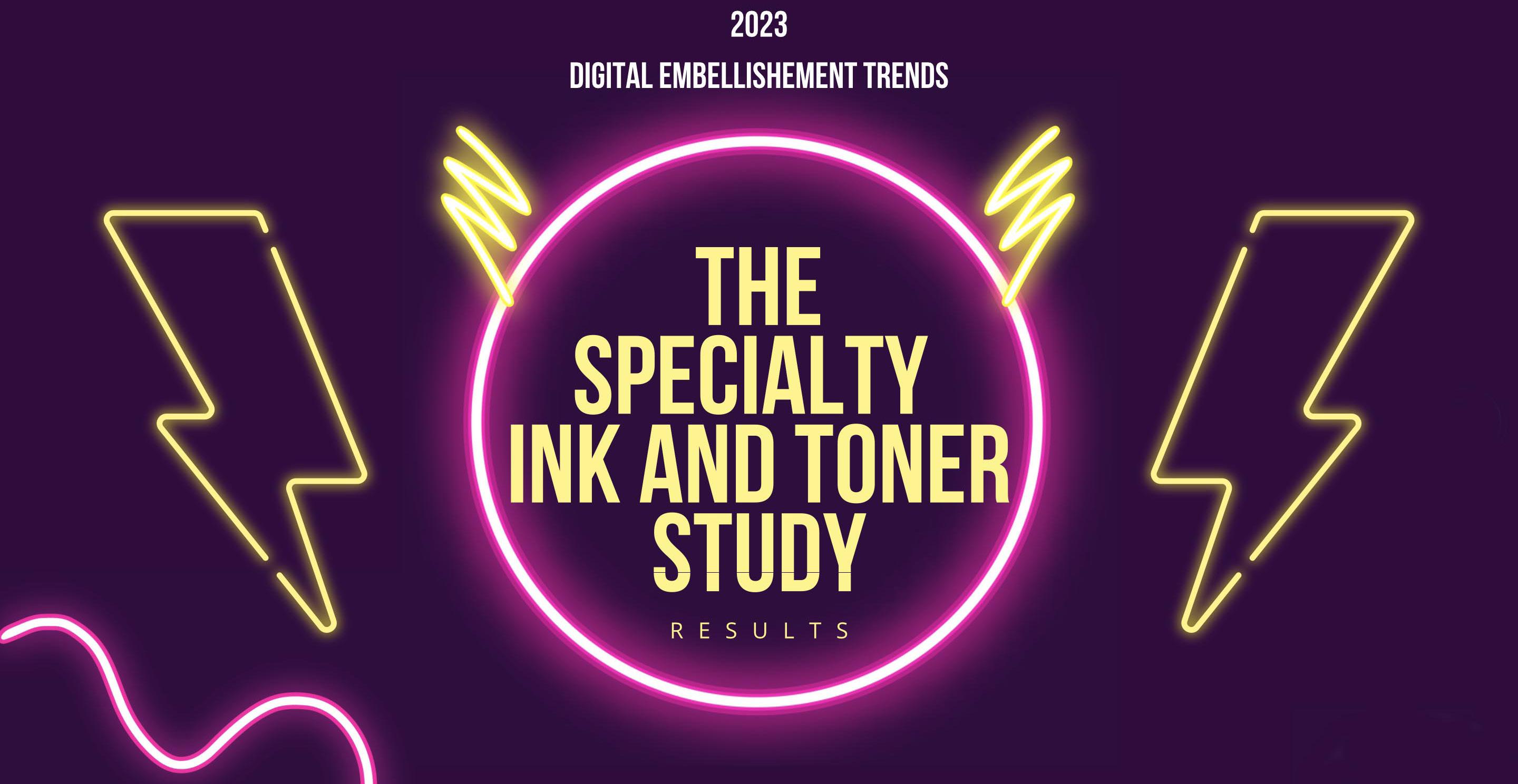

The “Specialty Digital Ink and Toner Embellishment Study” has much much more data than we can share here, and we dig into some of the reasons why there is a disconnect between sales and profitability, what factors impede the profitability of these jobs, what the obstacles to both selling and producing them are, and where more education from both the industry at large and digital equipment vendors in particular is needed. The full report digs into these questions by industry demo-
graphics (i.e., establishment size) and even by digital printing equipment vendor.
Digital embellishment is an exciting technology, and can provide new revenue and profit streams for print businesses. The industry just needs a little education. To start, you can purchase the “Taktiful/WhatTheyThink 2023 Specialty Digital Ink and Toner Embellishment Study” at whattheythink.com/specialtyinkstudy.
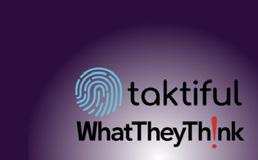
Nobody knows more about direct mail than the United States Postal Service, and it regularly puts out surveys designed to help businesses and mailers better understand their customers so they can get better results.
This generation was 57–76 years old in 2022. They make up 21% of the population and hold 70% of the disposable income in the United States. They also love direct mail. More than any other generation, boomers prefer to read promotional communications via direct mail rather than email. They are also the most likely to read catalogs.
Do boomers prefer direct mail because they are less digitally savvy? No, those days are gone. Today, it’s culture, preference, and maybe even a little bit of personal boundaries. These consum-
This generation was born between 1965 and 1980, making them 42–57 years old in 2022. They make up 19% of the population and have the highest post-tax incomes of any demographic, outspending millennials and baby boomers by 41% and 18%, respectively.
What elements of direct mail are most effective with Gen X consumers? These consumers are
By Heidi Tolliver-WalkerAs part of these efforts, the USPS conducted the “Generational Research Report,” which shows who’s reading what and what elements of direct mail are most important to which generations. Think of it as that generation’s direct mail fingerprint. Here are some highlights.
ers have lived a lot of life and earned the right to receive communications on their own terms.
When these consumers do receive mail, what elements do they see as making their mail most effective?
More than one-third of boomers say they have visited a brand’s website after receiving a piece of “relevant” mail. If you are going to send retargeted direct mail, however, they expect those communications to contain better deals than they would have gotten in the store.
slightly less likely to focus on deals and locally owned businesses than baby boomers. They like mail to make them feel special, with thicker papers and unique sizes or shapes.
Forty-five percent recognize that they have received a retargeted direct mail piece, and like boomers, they expect any retargeting to contain a better deal than they would have received otherwise.

This group was 25–41 years old in 2022 and comprise nearly 22% of the U.S. population. For 67% of this generation, finances are “a frequent worry.” How do they prefer to receive promotional communications?
More than any other generation, millennials prefer to receive promotional deals through email. However, it is notable that nearly one-third
(32%) prefer postal mail. So much for millennials not being interested in print!
Fifty-three percent of millennials are aware that they’ve received retargeted direct mail, and after learning how it works, 64% said they would be likely to read it. Millennials also have the best perception of retargeted mail, with 57% saying they enjoy receiving retargeted direct mail pieces.
This generation (today’s teenagers and young twentysomethings) make up 20% of the U.S. population. They are just starting to enter the workforce, so while they have pocketbooks, targeting Gen Z is a long game.
Gen Z is a digital native generation, yet they also enjoy direct mail. For them, it provides an interesting, tangible experience that texts and emails can’t provide. One-third (33%) are inclined
to make a purchase if they see it in the mail. Gen Z consumers are also the most likely to be enticed by unusual mail pieces—those with unique sizes or shapes. Thicker paper grabs their attention, as well.
As a highly creative generation that grew up surrounded by creative tools, from TikTok to Instagram, it’s not surprising that Gen Z responds to the more innovative, eye-catching elements of direct mail.
Visited a company’s website
Learned something about a company
Went to a physical location to shop
Shared information with another
Made a purchase
Visited a company’s app
Made a purchase after a reminder
Took no action
Direct mail still works. In fact, when the USPS asked about actions taken as a result of receiving a relevant mailpiece, the numbers were impressive. More than four in 10 (42%) respondents took at least some action, even if it was just going to the company’s website.
In this data, we also see that direct mail has the power to motivate recipients to some other sort of action, as well. This includes going to a new location to shop, making a purchase, and making a purchase after receiving a reminder in the mail. The data does vary by generation, but not as significantly as one might expect.
Surveys like the USPS “Generational Study” also remind us that no demographic group is ho-
mogenous, and in some ways, provide insights that challenge conventional thinking. In this case, the generation with the most disposable income is the most likely to want their direct mail pieces to contain discounts, while the generation most concerned about finances ranks it number one, but 17 points lower. The most digital native generation is less likely to focus on digital “extras” (such as augmented reality) than their older counterparts, and the youngest generation is the most likely to desire oversized type than the oldest.
This reminds us not to make assumptions, to do your research, and if the data surprise you or don’t make sense…dig deeper!
In our screen-dominated age, how do you start selling something you can’t easily photograph or show on a web page? Digital embellishment is an enormously effective way of boosting the visual and tactile power of print, but how can printers and service providers win over customers who’ve never seen or touched it before?
The obvious answer is to get samples in their hands and under their noses. We talk to three U.S. print service providers that have successfully won over customers after installing digital embellishment production systems. They’ve used hard work and clever marketing to educate their customers, and sometimes their customers’ customers, or their customers’ designers, about the added impact that embellishment can give their messaging.



















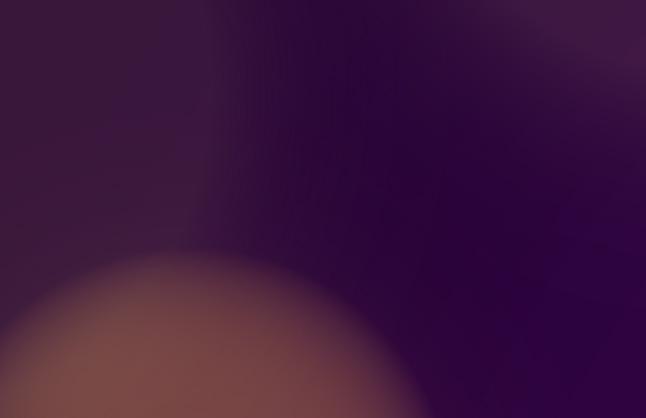
















First up is Alexander’s, a private, family-owned and operated company based 30 miles south of Salt Lake City, Utah. Jeff Alexander founded the company in 1979 and has grown it from a multiple-location copy shop to a global print and fulfillment enterprise.









With over 240 employees, Alexander’s now serves clients in 14 countries and ships to over 30 countries. It specializes in custom print-ondemand products through technology-based solutions. It has HP Indigo liquid toner presses and for digital embellishment, it runs both




Scodix and MGI inkjet embellishment systems, both equipped with foiling options.


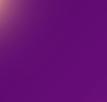


















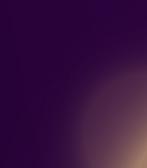





















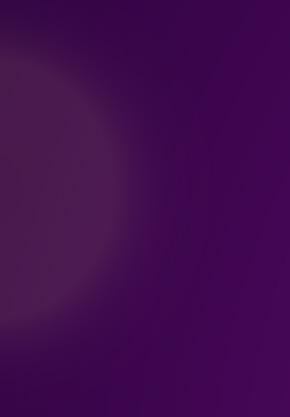









Alexander outlines his company’s development path.
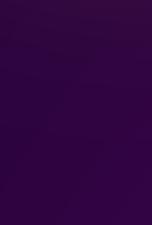
“We started out as a retail copy center, and then in the mid-1990s, we began to really evolve into more commercial print. By the beginning of the 2000s, we were focused a lot on technology and we’ve had our own tech team for over 20 years, until today we’re deep into commercial print.”
A lot of work now comes in from other providers that hook into Alexander’s API for direct web-toprint ordering. Alexander’s prints and fulfills these.









































































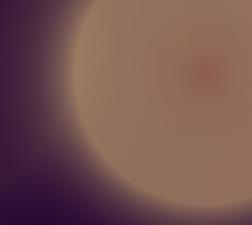




































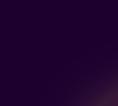



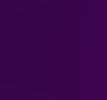
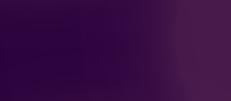


















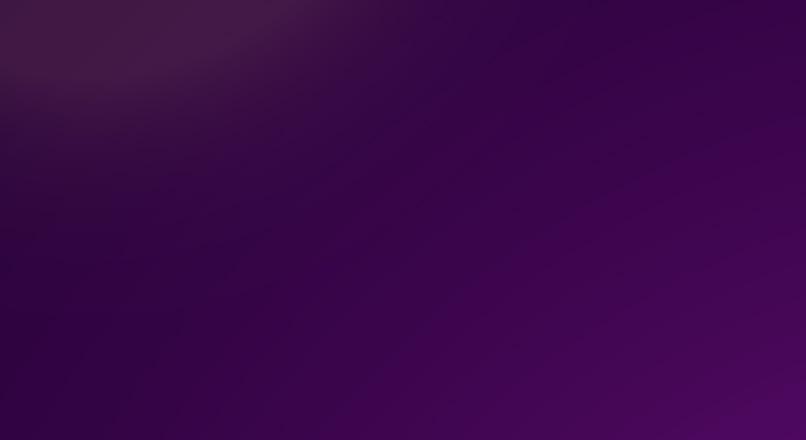






















“We embellish a lot of books. We do a lot of greeting cards and envelopes. Just a variety of different products, but the books especially are oneoff, and that’s become a specialty for us. We use a lot of digital embellishment, which has become a major part of what we now offer our customers.”





































Initially, he was skeptical about digital embellishment.










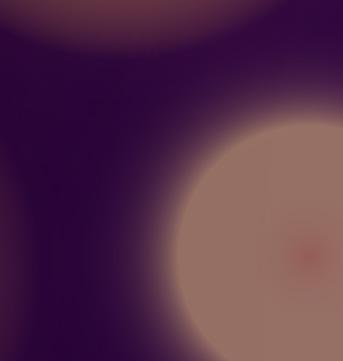







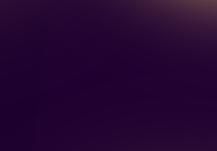


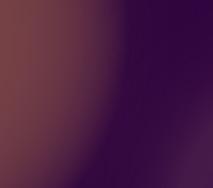







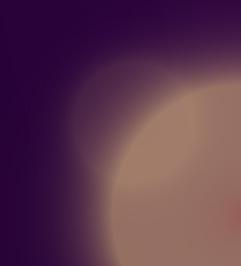

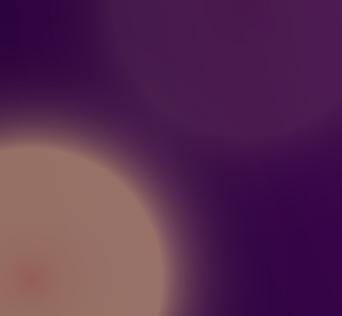

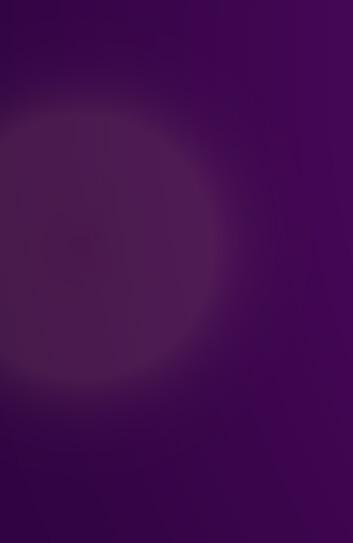


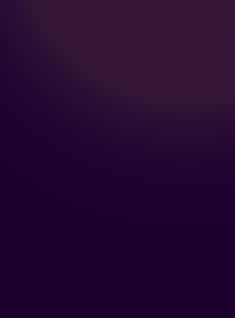

“About six months before we decided to buy our first press, somebody came by trying to sell it to us and we flat out said no, we just weren’t interested. Then we went to one of the print shows, and I had a greater chance to look and really get a feel for it. I just had this, really a gut feeling, that something could happen here. And that’s when we first met MGI. We talked it through quite a bit and felt that we could create a market.”

Three success stories share their secrets to creating memorable tactile experiences to sell customers on the magic of digital print embellishment.
By Kevin Abergel
Once Alexander’s decided to create that market, it went full steam for it, and its methods could be a lesson for anyone considering adopting digital embellishment.
“At that time we weren’t doing a lot online, we were just beginning that process,” Alexander said. “So we worked in a significant way with local designers, teaching them how to design, to use digital varnish and foil. It took us a while to get their attention.
“We had a lot of open houses. We were out there meeting with anybody we could and making a lot of our own samples so that they could get a feel for what it was. We would bring people in and ask them to send us files ahead of time so that we could prep them and show them how it could work. It took us six to nine months to develop a solid business in that area.”
Samples played a big part in this strategy.
“We couldn’t have done it without samples. You could talk about it all day long, but once they see it and they understand what it could do to their design, that made it. Then you couldn’t change their minds. If we could get this in somebody’s hand, they wouldn’t set it down. We even branded a name for ourselves called Tektured.”











Alexander said the challenge was slightly different for customers who were already aware of traditional embellishment.
“They’d say, ‘I’d rather have traditional foil; it looks much nicer.’ But once we could get digital in their hands, they saw how crisp and nice it was, and they began to realize, whoa, you can do customized work! So if it’s an invitation going to people for, say, an open house, you could personalize it for each person receiving the invitation in foil. It was just a hit; it made a huge difference to people. But they had to be able to feel it.”





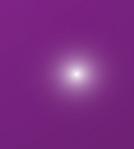






What does Alexander’s find are hot spots for personalization?









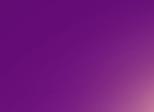




















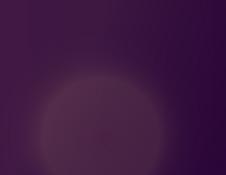





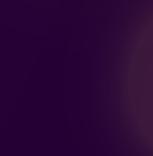
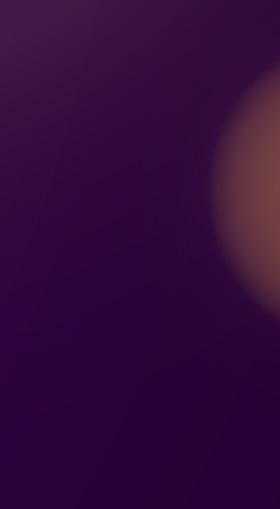



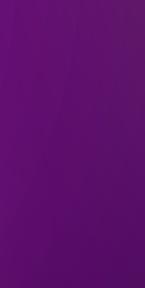


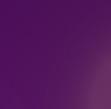

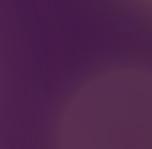




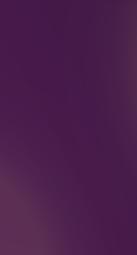





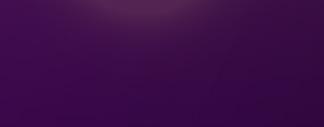








“We’ll customize invitations, greeting cards, book covers,” Alexander said. “We’re even experi-






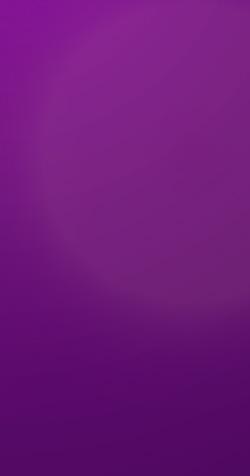








menting with whether you could add foil to a photo book all the way through. We’ve done a lot of boxes, and they are a real hit for people.
“For instance, at one of the local universities, we work closely with their athletics department, sometimes for recruiting, other times it might be fundraising or tickets for sports events. They’ll personalize a box, fill it with some gear and send it out. And we use the foil on that a lot so that it stands out, totally personalized to that person that it’s going to.”
If he had to choose between digital embossing and foiling, Alexander says it would be foiling, though pointing out that his Scodix and MGI systems can do both.
“I’d still go with the foil because it stands out. But I’d also love the opportunity to add some varnish on top of that foil to finish it off. It’s just gorgeous!”

Next on our list of digital embellishment success stories is Truly Engaging of Arden Hills, Minn. This online, full-service stationery store offers B2C and B2B personalized products with unique messages. It designs and produces magnets, cards and other stationery.
The company, founded in 1991, was originally called Magnet Street, and is currently run by President David Baird. When it grew large enough to bring print in house, it was digital from the start— today’s presses include an HP Indigo 12000 and a Xerox iGen4 Diamond Edition.
Initially the property market was booming.
“We started by making schedule magnets and all kinds of longer run magnets,” Baird said. “Then we figured out how to do real short-run magnets. We sold direct before there was a thing called the internet.















“All of a sudden we could do short runs and all these things, and then the internet came along. We hired an SEO specialist, which seems funny because we didn’t even know what SEO was. But




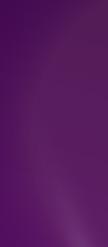



































































































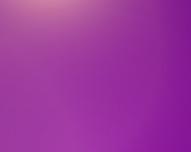







































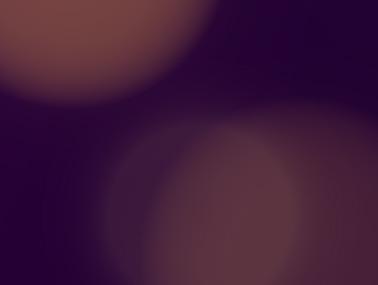

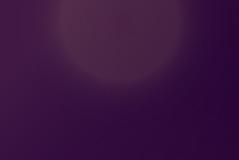
























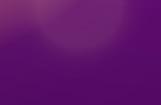














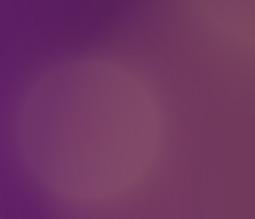








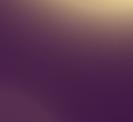


































































he came to me on a Friday and said, ‘Hey, what’s a save-the-date?’ I said, ‘You got me. I have no idea.’ He goes, ‘Well, there’s tons of people searching on the web for this thing called save-the-date magnets.’ And I’m like, ‘Wow, that’s cool. I have no idea what that is.’ He goes, ‘Yeah, it’s for weddings.’
“So I went home and stopped at a Walgreens on my way. I picked up three bride magazines and I spent the weekend scouring them. My family thought, ‘Oh gosh, dad has lost his marbles.’ But then I saw ads for wedding planners and all those kind of things, and it was just crazy. So within four, five, six months, we launched Magnet Street Wedding. And it absolutely exploded. We did, I think 70,000 weddings our first year.

“We started a blog a few years later called ‘Truly Engaging’ and we went from save-the-date magnets to invitations and programs, the whole wedding print suite.”
Baird said embellishment was a natural add-on.
“We were looking to constantly improve on the process. What else can make it interesting? We started seeing some of this digital embellishment, specifically foil.


“And we’re like, ‘Brides like foil, right?’ They like
it on all kinds of things. So we kind of faked it. We were doing a poor man’s sleeking just to prove that there’s an appetite for it and they’re willing to pay for it, and it can set us apart.
“As demand took off, however, foil-laminators were too slow, so the question was how to scale up. After much research, the answer was Scodix digital inkjet.”
How did Truly Engaging market this, given the limitations of on-screen previewing for embellishment? As with Alexander’s, he put samples in the hands of potential customers.
“On the wedding side, we’re sending out literally tens of thousands of samples a month. What set Truly Engaging apart, initially, was you can order one. You give your details and a few days later you get it in the mail, so you get to hold it in your hand.
“For us that’s the big challenge. We’re a web, online, e-commerce company. We need to get brides to trust us. So we did a ton of sampling, and then word of mouth really took it from there. If we send a bride a sample with no foil on it, and then with foil on it, we win. Once you see it and feel it with foil, it’s like you can’t look away.”
The same idea was applied to the company’s
other main vertical markets, especially colleges.
“In our college market, we’ll send one of each and say we’re not going to decide, you decide. Well, 99 times out of 100 if the budget’s there, then foil wins, varnish wins. So sampling for us has been really, really big.”

Once the Scodix was in, new application ideas started. Labels was one. Although uncertain whether the Scodix varnish would work with label material, they did a trial on a real label job for a university mailer.
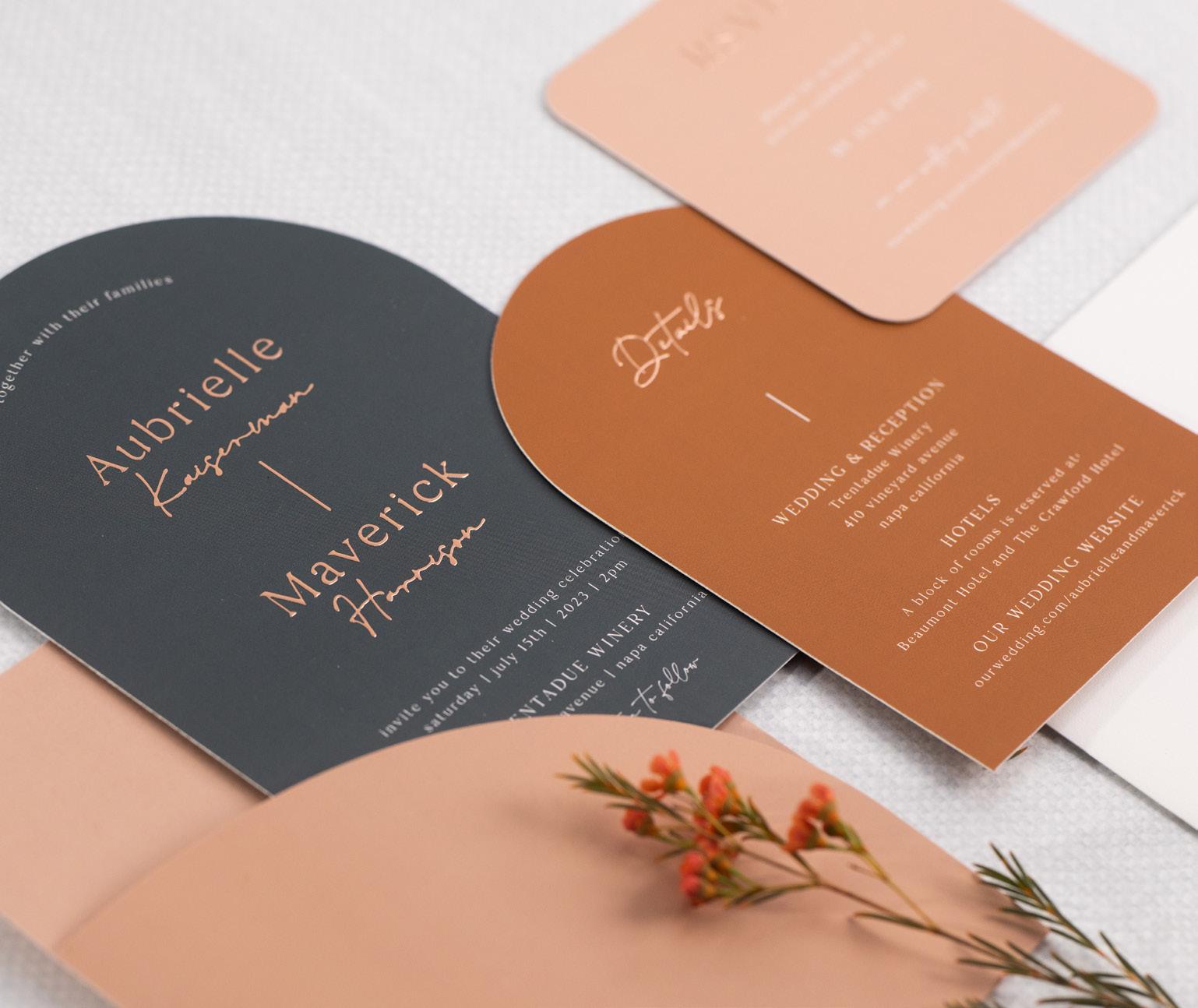
“So we quickly set up the masking file and varnish and it was awesome,” Baird said. “I think we hardly sell a sticker any more without varnish. It just makes it pop, it’s amazing. Whether we’re doing magnets or we’re doing stickers for universities, we’re varnishing it at least eight times out of 10 now.”
When hypothetically asked to choose between keeping digital varnish or foil, Baird said it depends on the market.
“Foil for sure in our wedding market. Our consumer market is foil, no question. But for sports, universities and commercial, all-foil would be too expensive. We can put a nice, clear varnish on their logos and it’s awesome. We have gone away from foil in those markets, with much more use of varnish.”
Our final success story comes from Team Concept Printing, based in Carol Stream, Ill. It is primarily a trade printer offering services to other printers, but also works with agencies, designers and print brokers. It has both litho and digital presses, a range of finishing and binding equipment and mailing facilities. Standard products include stationery and greeting cards, mailers, booklets, boxes and packaging, signs and banners, folders and card holders.
Team Concept’s current embellishment arsenal includes thermography, traditional embossing and debossing, digital spot UV varnish with digital embossing, laminated foil (“Sleeking”), and book edge decoration.
In 2018, the company installed an MGI JetVarnish 3D digital UV varnishing inkjet with raised imaging and iFoil foiling unit. It uses a brand name, LUXfx, to cover these.
We spoke to owner Tony Rouse, who is also the founder and CEO. He founded Team in 1998 after a career in print. Digital embellishment was a natural progression from physical stamping.
“We’ve always done hot foil stamping and embossing,” he said. “We did it on a Kluge. We started in

Team Concept’s Luxfx embellishment brand in action with this eyecatching self-promo piece is sure to leave a lasting impression. Elevating wedding invitations, Truly Engaging’s custom embellished invitations create bespoke designs that are as beautiful as they are unique.
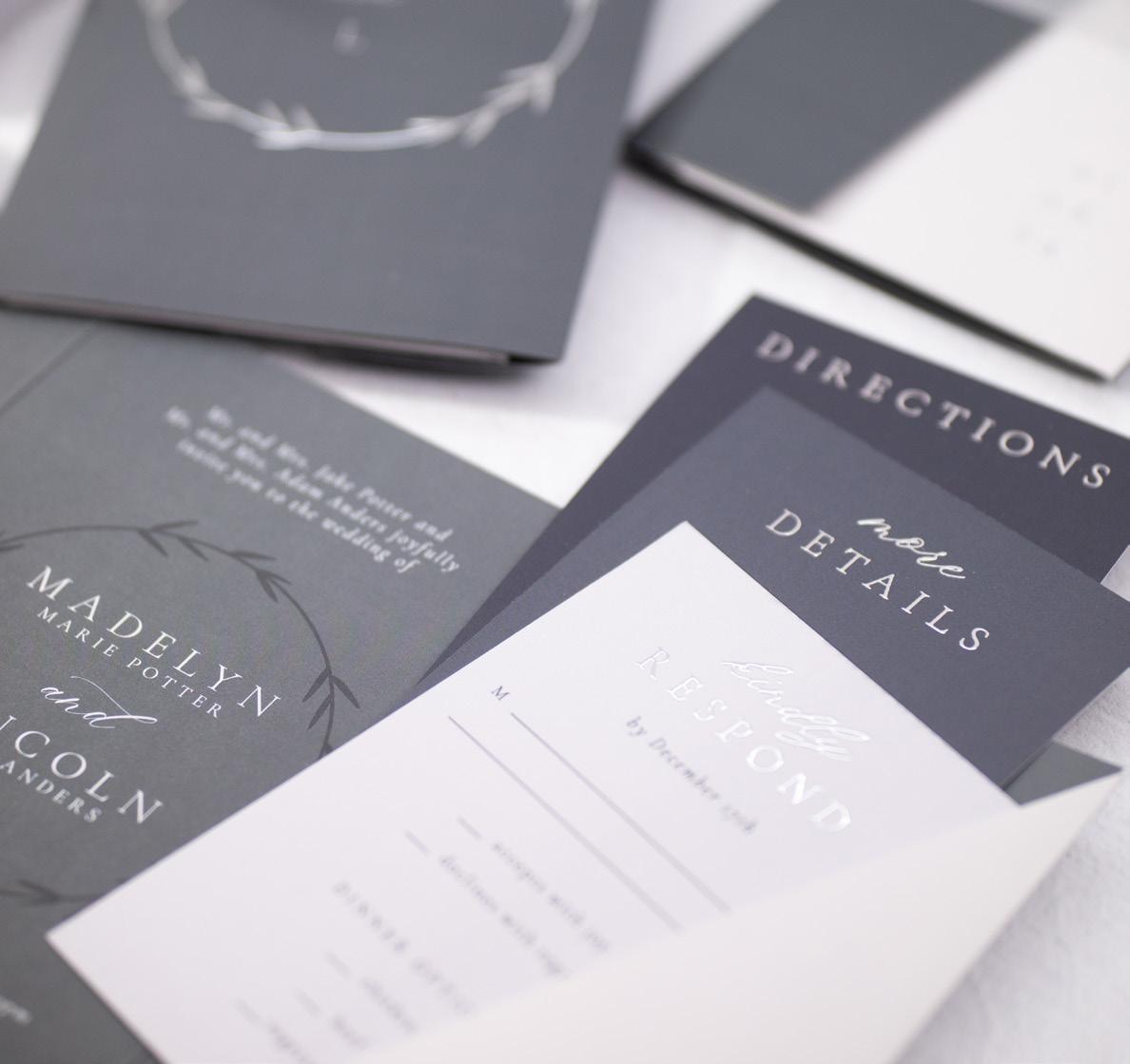

‘98 and I think we got our first Kluge in maybe 2000.
“We could see the market changing from people sending in RFQs. If we’re not able to do them or we see something different, we start making a little note. Our estimators make a note and say, ‘OK, we’ve been asked this 12 times in the last six months and it’s not something we could do.’ Then we have a team that looks and says, ‘OK, this is something we need to learn about.’”
As digital embellishment appeared, requests started to change.
“Those embellishment RFQs, they were different than the Kluge foil stamping and embossing we were doing,” Rouse said.

Expanding embellishment was a logical response to customer needs.
“Everything that we do here has been answering the bell with what the client has needed, to drive more print,” he said. “So embellishment was a natural thing because it opened the door to us for some clients who were looking for that one need. And even if it was only a tiny percentage of the work they sent us, it still was something we didn’t want someone else doing. So we said we need to be able to step up and answer that.”
Team Concept Printing took a different approach to promote digital embellishment once it got it in.
“Market education has been huge because the biggest thing is since we’re predominantly a trade printer, we rely on being able to tell our clients who are in the middle a lot of times, to be able
Using the texture of a basketball as inspiration, Team Concept showcases their impressive LUXFX tactile embellishment capabilities in this captivating piece.
 Behold the power of Truly Engaging’s Scodix digital enhancement press.
Behold the power of Truly Engaging’s Scodix digital enhancement press.
to then go to their end user and say, ‘Hey this is something new that you want to consider.’
“You need to get it out, so the end user person sees it and goes, ‘Yes, that’s something I want on my marketing piece or my mailer to make it different from everything else.’




“So, we’ve done a great job on our social media. Trying to showcase it, have people share it. There’s a lot of times we do that and people will message us off of that and say, ‘Hey, we want to take a look at that for our project.’”
Part of this work was in giving digital embellishment a brand name.
“You need to make it so that you’re different than everyone else. Come up with a name for that.
“And so we came up with LUXfx. We even use it for thermography now, where that used to be our standard. Now for anything we add onto a piece to decorate it differently, maybe glitter, thermography, or we even put scented inks or different things like that, we include that under our LUXfx umbrella.”
So, foil or varnish, if he had to keep just one?
“The dimensional varnish. While I love the foil and we use it all the time, I think the things you can do with the dimensional varnish really make a piece sparkle, and there’s no other way to do that. We have ways we would still be able to have a really nice foil product, but there’s nothing like the dimensional varnish to be able to really make something stand out.”
Meet David Baird, the President of Truly Engaging, and his wife Lisa - the dynamic duo who launched this innovative business over 25 years ago. The mastermind behind Team Concept Printing is Tony Rouse, the founder and owner of the Carol Stream, Ill.-based company. Meet Jeff Alexander, the visionary owner and founder behind Alexander’s, based in Lindon, Utah.With all of the advancements and discussion around value-added print and embellishments, it’s hard to ignore the pressure (and excitement) of going all-in on the latest and greatest equipment in the category. However, I’ve always been a fan of a crawlwalk-run strategy, and in our industry, there is truly something for every budget. So, in that spirit, I’ve compiled an overview of the field of opportunities to get into embellishments, or if you’re already in, a pathway to upgrade to the next level.
We’ll look at foil, varnishes/coatings and cutting embellishment categories, with equipment separated into entry, mid and high investment cost. In this exploration, price is not a reflection of quality. Quality is a given. Pricing categories generally reflect increased speed, features, automation and size. This is not an exhaustive list—so, please look at this like a good starting point for your print embellishment equipment research.
The obvious starting point for foil would be hot and cold foil stamping, which is a mature category in our industry, so I’m going to focus on the newer foil and shimmer technologies for this exploration. These technologies include inkjet foil, metallic toners and toner foiling.
Metallic toners (in my opinion) are kind of like the digital version of a PMS metallic ink. You get a shimmery effect that’s not as intense as foil, but it’s still a real enhancement. For this technique, you’re really evaluating toner-based digital presses from HP, Kodak, Xerox and Ricoh.
There are entry, mid- and high-cost press options and enhancements, which make metallic toner embellishment offerings attainable for most printers. If you already own one of these presses, often it’s just the switch of a cartridge or the purchase of a package of specialty toners that does the trick.
Toner foiling (commonly referred to as Sleeking) is the process of bonding foil to digital toner. It’s a brilliant process that requires only a toner-based digital press, plus metallic toner transfer film, and a laminating machine. It’s also a very cool way to achieve variable foil. Sound interesting? See the next category for lamination equipment to consider.
Also worth your consideration is Color-Logic, a system that offers the ability to print CMYK over a silver ink to control the exact tone of the metallic effect and create up to 250 metallic colors—all on your current press. No special equipment required.
Entry
KM AccurioShine 3600
Duplo DDC-810
Mid
MGI/Konica Minolta JETVARNISH 3DS / 3DL
Scodix Ultra 1000–5000 Presses
Duplo DDC-8000
KURZ DM-SMARTLINER
High
MGI/Konica Minolta JETVARNISH 3D EVO
Scodix Ultra 6000
This is also a big category, with lots of different approaches for achieving an array of clear finishes and textures. Varnish effects and UV and aqueous coatings are the known entity here, so I’ll focus on inkjet effects, toner-based solutions and laminates.
Clear toner has become almost a staple or expectation in digital presses for the ability to mimic varnish effects that can be achieved on an offset press. For the clear toner category, you’re evaluating toner-based presses from OKI, Ricoh and Xerox
Entry
KM AccurioShine 3600
Duplo DDC-810
Mid
MGI/Konica Minolta JETVARNISH 3DS / 3DL
Scodix Ultra 1000–5000 Presses

Duplo DDC-8000
KURZ DM-LUXLINER
Autobond SUV
High
MGI/Konica Minolta JETVARNISH 3D EVO
Scodix Ultra 6000
at the entry point, and moving into the mid- and higher-investment levels with larger presses from Xerox, Kodak and HP.
There are lots of options in the clear inkjet category—and most of these presses we’ve seen in the inkjet foil category as well. Clear and foil shimmer effects in both flat and raised profile go hand-in-hand these days, and the market has met that demand with versatile machines. The word on the street is that there are some new players coming to market soon, so keep an eye out in this category.
Soft touch is the most popular lamination film texture these days, but there are lots of different textures and effects (gloss, matte, etc.) that can be applied with a lamination machine. But why laminate if you can apply coatings on press? Laminates are particularly scuff-proof, consistent in their application, and use of laminates eliminates chemical handling and long clean-ups on the press coating units. So, they can be a great alternative, especially for short to medium runs.
Another great use for a laminating machine is toner foiling. If you’ve never heard of it, maybe you’ve heard of digital foiling or Sleeking. Sleeking is the catchy, Nobelus-registered name for the process that stuck (kind of like “all Kleenex are tissues, but not all tissues are Kleenex”). Toner foiling is the process of bonding metallic toner transfer film to digital toner, and a lamination machine is what you need to bring it all together.
Flatbed die cutting machines use your classic steel rule dies embedded in a board called a platen. This is a very mature market, and these machines are often used on anything from pocket folders to packaging. On many of these machines, you can cut, crease, kiss-cut, emboss and even foil stamp.
Rotary die cutting uses flexible metal dies mounted on a magnetic cylinder. They’re thin and easy to store, and you can cut, perforate, score and kiss cut. They’re very useful and versatile machines with a small footprint, which makes them great for just about any print shop. Rotary cutting is also very common for the label market, but I’m staying out of specialization, because it’s really its own category.
Komfi Junior 36
Skandacor ALM 3222
Duplo DFL-500
High
Mid Komfi Sirius 107
Bagel Falcon B1
D&K Double Kote
Karlville Combi
Bobst CL 750D
Entry
Kama ComCut 76
Mid
Kluge EHF
Heidelberg Multimatrix 60 C/FC
High
Bobst Mastercut 106 PER Koenig & Bauer Ipress
Heidelberg Mastermatrix 106 CSB

Laser cutting is an exciting and creative category that offers the ability to cut without a metal die, which provides the ultimate in design flexibility, as well as quicker turns and streamlined setup. We often see highly-detailed laser-cut design examples for promotion of laser cutting embellishment, which have a lot of “wow-factor” from an aspirational perspective, but I really like laser cutting for packaging, variable cutting, comps, iterative design exploration, and other more practical applications, too.
Entry
Duplo UDM-300
Mid Standard Horizon RD-N4055
Moll Flexcut 760
Duplo UD-310
Rollem Insignia
MBO BSR-550
High Koenig & Bauer CutPro Series
Heidelberg Speedmaster XL 106-D
Entry
Glowforge
Roland Laser Decorator

SEI Laser Easy xTool P2
Mid SEI Laser Flexi Line
Konica Minolta Motioncutter 23
High Highcon Euclid 5
Highcon Beam 2
SEI Laser Paperone 7000

Also capable of customized digital cutting and scoring, a digital knife can be a step before a laser cutter investment—or it can serve its own special role in your shop. A digital knife (or CNC) can cut materials that cannot be laser cut due to flammability or fumes. These machines can cut paper, as well as other materials like vinyl, cardboard, foam rubber, plastics and textiles. The bigger machines are great for applications like point-of-purchase, signs and merchandise display.
You might think slitter/cutter/creasers are a bit fringe for the embellishment category, but one of the most common uses for these types of machines is multiple-up business cards and postcards. Often these items are in smaller stacks, because they’re
embellished with foil or raised inkjet effects. So, if you’re getting into foil and raised inkjet embellishments, you may want to add one of these machines to your arsenal.

If you have not already started to look around to see what’s out there, and what could be added to your offerings, I hope this resource gets you moving in the direction of value-added print. If you’re feeling overwhelmed, pick a category and look first at what you currently own. Can you modify or enhance what you have, or do you need to add new equipment? Can you work with your sales team to determine what your easiest win could be? There are lots of ways to approach the investment, whether you have a large or small budget to work with. So, jump in, the water’s warm!
Cricut Maker 3 USCutter TITAN Mid
Skandacor FC 500VC
Duplo DPC-400
Kongsberg XE
High ZUND G3
Esko Kongsberg XP Auto
DYSS X9 Digital Cutter
Slitter/Cutter/Creaser Entry
Morgana Autocut Pro
Mid
Standard Horizon Smartslitter
Duplo DC-646
Rollem Jetstream
High Standard Horizon Smartstacker
Hunkeler DocuTrim

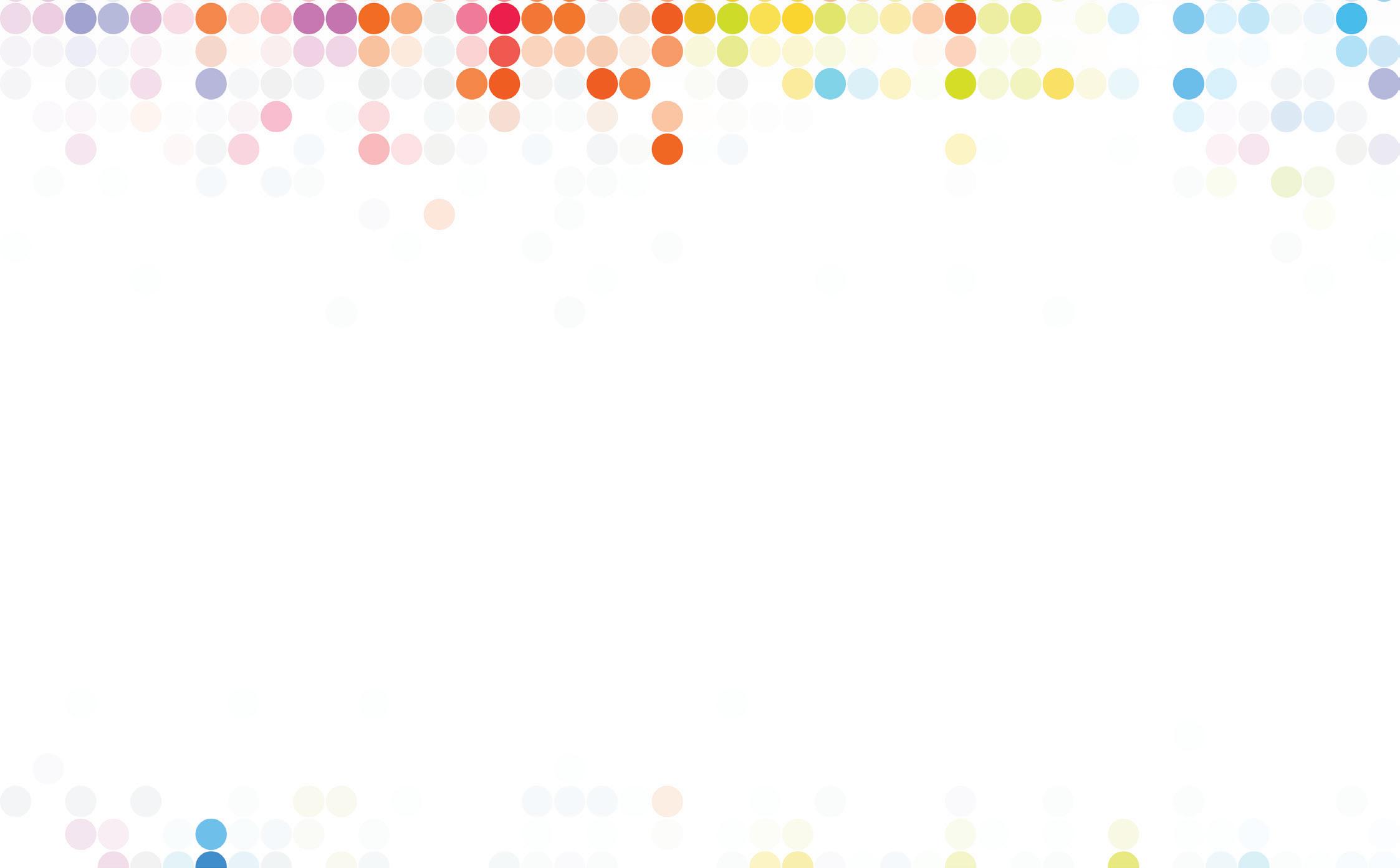


 The Cube was runner-up in the cover design.
The Cube was runner-up in the cover design.
He gets it. Things change. Technology keeps moving forward. If you’re not riding the next wave, you’ll drown.
That’s why Matt Redbear, creative director for Taktiful, has spent the past 40 years catching one wave after another, not just surviving but thriving in a digital world.
His career began in analog film and plates, diving into photographic production technology, photo lab management and professional photography. This eventually led to his career as a master lab technician and photoelectric engineer for companies affiliated with Kodak and Fujifilm. Then digital technology suddenly changed the course of the photographic industry, and he took a step back to plan his next move.
“I took a while off,” Redbear said. “I traveled to find out what I wanted to do, but couldn’t keep my hands out of graphic design.”
So he entered the marketing world, working with computerized graphic design and advertising, until the next big tech wave hit – the internet.
“I migrated my talents to create social media for UX/UI site development, live promotion through public and private events and content acquisitions, and lots of video production. So my career kept rolling forward into what was new.”
After a big move from Colorado to Florida, he found himself back in the pre-press world, where he witnessed 10 years of digital trends take over the print industry.
“And then, boom, I had the opportunity to start with the embellishment industry,” he said. “Once I saw those test sheets that the manufacturers were sending out… I was hooked.”

Redbear partnered with Kevin Abergel in the launch of Taktiful, a consulting company specializing in print embellishments for brands, printers and OEMs.
“I joined with Taktiful in an effort to usher in this new era of digital embellishment in postpress production,” Redbear said. “And what Taktiful does, of course, is combine the science of touch with the power of print.”
That’s why WhatTheyThink reached out to the Taktiful team to help create the cover for this Embellishment and Finishing Issue.
Being the technology chameleon that he is, Redbear went straight to AI for his inspiration.
“The next big disruptor is going to be artificial intelligence,” Redbear said, “whether you call it deep learning or machine learning. It’s now learning patterns at a faster rate than the human mind can comprehend.”
That would scare quite a few people, worried that a machine will take their jobs, make them obsolete, but not Redbear. It’s just another big wave.

“Thinking back to 1987, I was working in a hospital administrative position,” he said. “At the time, the entire hospital was being computerized with a mainframe. Unexpectedly, because we bought this huge mainframe from IBM, they put all these little desktop computers in the offices. I was 27 years old and panicking because now I was going to have a computer to use as part of my daily workflow. I remember feeling like I had to jump onto a fast-moving ship or get left to drown. The emergence of AI feels the same.
“Look at where it has brought us, look where it has taken us to the level we’re at now with cloud computing, with automation and new jobs. It won’t eliminate your job, but it will make it different.”
That’s why Redbear is so excited about AI and the possibilities it has for the print and graphic design industries.
“Once you create a model, you feed in the data, and the results can be done in seconds,” Redbear said. “So whether you’re trying to separate layers, create or enhance images, generate a marketing concept, re-flow text or make general workflow improvements, it’s all artificial intelligence. And it’s going to make the whole industry a lot more fun, I think.”
So when he and Abergel set out to create the cover of the magazine, they just started feeding ChatGPT some ideas. Then ChatGPT fed those prompts to Midjourney, an AI tool that makes visual art based on text prompts.
“Literally, you’ve got AI telling you how to use AI to create this, but you can also take the AI sugges-
tions and modify them slightly. Then you upscale, create variations, upscale again, until you finally get something you think will work.”
After Redbear and Abergel sifted through close to 20 ideas before showing the magazine staff five final options, we arrived at the “AI Goddess” for the cover. We felt like she represented the human element of AI and the way it combines both human and technological aspects of art and print.
AI isn’t perfect, and it still requires the human element of creativity to make it a powerful tool, which is what it is – a tool designed to help us be more creative and free up more time to do the fun stuff.
“It’s time to get excited, honestly,” he said. “We need to put any fear aside, because fear is human nature associated with the unknown.
“But let me tell you, it’s happening fast, and everything is exponentially moving forward as we evolve into this. The use of AI and machine learning is going to enhance everything that we do in the near future.
“The help that we’re going to get with automating workflows will make your job so much better and easier, so much more predictable and stress-free. Instead of having nerves, you’re going to have help.”
In the meantime, if AI is freaking you out, Redbear knows where you can get some advice.
“Write down your questions about estimating or production, standardized file preparation, marketing, equipment acquisition, working with OEMs and prompting, and bring them to Taktiful” he said. “We would love to hear them.”
 WhatTheyThink and Taktiful arrived at the “AI Goddess” for the cover.
WhatTheyThink and Taktiful arrived at the “AI Goddess” for the cover.

The imagePRESS V Family of color production digital presses elevate the proven quality, productivity, reliability, and versatility of the imagePRESS brand. With Canon’s dynamic combination of integrated color control and distinct, vital technologies,




the imagePRESS V Family offers outstanding, laborsaving automation that can help even the most novice operators deliver superb, impressive output easily and efficiently. And it’s exceptional results like these that can keep your customers coming back for more.

 By Heidi Tolliver-Walker
By Heidi Tolliver-Walker
Look inside your mailbox. This isn’t your father’s direct mail. Today’s mail technology enables campaigns that are truly cutting edge,
From an automation standpoint, we have “lights out” workflows, AI and triggered mailings. While at full production speed, we can produce full-color, high-resolution, on-envelope imaging with full bleeds. We’ve barely scratched the surface of what can be done with personalized, customized messaging printed on the outside of the envelopes after they have been stuffed and sealed with variable content.
What is remarkable about these applications isn’t just the individual technologies on which they draw. It’s the combination of these technologies to create new (profitable) applications never before possible or even imagined.
Jim Williams, director of marketing for Kirk-Rudy, gives the example of one of his clients, a small shop with less than 10 employees, that combines the company’s FireJet 4c (which is based on the Memjet DuraFlex engine) with Google images to produce a proprietary application for a real estate customer.
The workflow takes full-color, full-bleed, personalized images of the recipient’s home—taken from Google Images—and prints them on the exterior of the envelope in 1600x1600 dpi resolution, bleeding off the edge.
“Direct mail is all about the open rate,” Williams said. “When the recipient sees a Google image of their home (sometimes even with their car in the driveway), if you’re that homeowner, you’re going to open that, right?”
Even for printers without the capability of developing proprietary programs, the ability to print high-resolution, full-bleed images on envelopes opens a whole new world of opportunity of its own. With today’s technology, direct-mail letters can offer many of the benefits of postcards, with the messaging and call-to-action visible before the envelope is even opened.
Using the FireJet 4c, Williams sees customers printing everything from pizza slices to American flags.
Even as full-color, full-bleed equipment opens new marketing opportunities for printers of all sizes, the 150 ft./min. speed has been a challenge for higher volume manufacturers. Many of Kirk-Rudy’s customers, for example, are purchasing multiple machines—four or five at a time—to keep up with the volume.
Enter Vario Printing Ophrys Iricolor inline envelope printer. The printer is targeted at high-volume shops, running at 203 meters per minute at 1600 x 1600 dpi. The printer is integrated with the inserter machine, making envelope printing a seamless part of the production process.
“If you are doing saturation mail in white envelopes addressed to ‘Dear Current Resident,’

it’s not something people see as important,” said Troy Shatus, president and CEO of Capital Mailing Equipment, which distributes the Ophrys Iricolor. “If it’s truly about the open rate, full-color personalization is the only way to go—and high-volume manufacturers need equipment that can keep pace.”
The Ophrys Iricolor has three modules: a direct-printing module; a preprint module with a vision system for tracking and tracing; and a module with laser micrometer that measures the thickness of envelopes, allowing marketers to produce variable-page packages for different customer groups. The Iricolor also has true-color profiling software for printing PMS colors.
Another benefit of on-envelope printing, is the ability to eliminate warehoused inventory.
“I am talking to a printer right now that is tired of warehousing hundreds of thousands of envelopes preprinted with its clients’ logos,” Shatus said. “Right now, they have 100,000 square feet of warehouse space, and they are looking at the Iricolor as a way to reduce that by half. Plus, they won’t have all of this inventory at the mercy of humidity and other environmental conditions.”
As the mailing industry becomes more sophisticated, Shatus also sees the need for envelope printers, not just to print full-color messaging and images, but to print on virtually any substrate. This points to true UV equipment such as the HAWK M7K UV Inkjet Addressing System, which can print either UV-curable or water-based inks, providing flexibility. The HAWK prints at speeds up to 500 ft./ min. dependent upon resolution, substrate and drying. Because of the reliability of the system, these machines have hundreds of millions of impressions without printhead failure.
It doesn’t matter how cool your marketing pieces are, if you don’t have the postal optimization that allows you to make money.

Traditional list houses are disappearing, as well as their knowledge and experience. This makes it increasingly difficult for printers to turn a profit.
This is why TEC Mailing Solutions offers a variety of cloud-based solutions to help with data quality, presort and postal optimization. Its Mail Preparer platform gives printers “lights out, hands
off” mailing automation that results in maximum postal discounts.
According to Scott Eganhouse, vice president of business development for TEC Mailing, the interface is so simple that printers often look at the solution and say, “There is no way this stuff works.” However, if you can put a CSV or DBF file into print production, you can use MailPreparer.
“Printers will come up to me and tell us, that’s not possible, but it is,” Eganhouse said. “I have a billion pieces going out of our equipment.”
Although the solution can be used by any size printer, Eganhouse’s high-volume clients can save $1 million per year using this platform.
Solutions for data quality and presorts also help to fuel other innovations. One TEC client, for example, is using the solution to produce real estate mailers triggered through the client’s CRM. The client sets up the triggers, sets a budget, and working through the Zapier platform, automatically gathers the assets, personalizes each piece, and runs everything through postal optimization up to the limit of the client’s pre-established budget. The entire workflow is hands-free until the mail is trayed.
Another technology coming to mailing is artificial intelligence. Already, businesses are using AI-driven tools like ChatGPT to write copy for promotional materials. However, the greatest impact is likely on data analysis.
AI can sort through masses of data in fractions of a second, finding trends and creating profiles that the average human being would likely miss.
In DirectMail2.0’s recent webinar, “Revolutionizing Direct Mail: How AI is Transforming the Industry,” Brad Kugler, co-founder and CEO of DM2.0, aptly described AI as being able to find the proverbial needle in the haystack.
“AI can make decisions en masse and faster than we do,” Kugler said. “[In the marketing space,] AI will be able to use big data to analyze and un-
cover patterns faster and in far more detail than human beings could ever do.”
DirectMail2.0 is in the process of creating an AI engine, DM20.ai, for this purpose. AI is only as accurate as the data it is drawing from, which is where DirectMail2.0 shines.
Over the years, the company has tracked one quarter of a billion pieces of mail, in all 50 states, in about 100 different verticals. This is the data set on which the engine will draw.
“We can take our data and correlate that to the results of the campaigns,” Kugler said. “For example, we might notice that, for a certain vertical, we see a 3% lift in website visits when there is a picture of an elephant on the envelope. Or, if the headline is 72-pt. type in red, we’ll get a 1% lift in phone calls for education. This is information that only big data, machine learning and AI can generate.”
Once the first phase of the platform is complete, the goal is to make it as a simple as putting a request into a search box.
While not at this level, there are already some companies using AI to fuel their direct mail creation.
InkIt, for example, uses AI for product recommendations, direct mail campaign forecasting, and generation of multichannel automations.
XMPie is also experimenting with AI to create personalized direct mail campaigns: directing the personalization workflow and even using ChatGPT to write marketing copy.
When you compare these scenarios to traditional inkjet addressing onto white envelopes, the workflow is hardly recognizable. While the word “revolutionized” is often overused, it is appropriate here.
With tools such as postal optimization and presort, full-color envelope printing, and AI, the advancements in mailing technologies have revolutionized the way customers communicate and market through mail—and the profitability with which printers and mailers can help them do it.
Traditional list houses are disappearing, as well as their knowledge and experience.
Print has always been an important part of the marketing mix. It’s a tangible, tactile medium that engages the senses and creates a lasting impression. However, with the rise of digital marketing, print marketing has faced some tough competition. In order to stay relevant, printers, manufacturers and brands need to find new ways to innovate and add value to their offerings.
As a B2B marketer who’s passionate about print, I have seen the evolution of print technology over the decades, from basic ink on paper to the latest digital printing techniques. One of the most exciting developments is the use of digital embellishments to increase brand recall, promote universal design and create interactive print.
Traditionally, finishes like foil stamping and embossing required the creation of expensive custom dies and plates, which added significant costs to the production process. By eliminating the need for these tools, digital embellishments can be produced more efficiently and cost-effectively. This not only saves time and money, but allows greater design flexibility and customization.
Digital embellishments can be applied to a wide range of print materials, including paper, cardstock and even packaging, making them a versatile and cost-effective way to add value – and profitability – to print projects.
Let’s explore how digital embellishments are revolutionizing ink on paper.
Labels and packaging play a crucial role in the success of a product. They are the first point of contact between a brand and a consumer, and they can make or break a purchase decision.
Digital embellishments allow brands to create visually stunning packaging and labels, with intricate designs otherwise difficult or impossible to achieve affordably with traditional printing methods.
With a range of options including metallic finishes, raised textures, and holographic effects, digital embellishments can create a premium look and feel that helps products stand out and motivates consumers to buy – often at a higher price.
Foils add a premium touch to any label or package, making it look – and feel – more expensive and luxurious. Highly popular, they’re used to highlight specific elements of a design, such as a logo or product name, making them even more memorable and easier to recall.
Using textured embellishments creates a similarly tactile experience that engages consumers and makes them more likely to remember a product or brand.
For example, a label with a raised texture that mimics the feel of a fruit or vegetable creates a more powerful sensory experience than its 2D ink-on-paper counterpart – while simultaneously enhancing the perceived quality of the product.
Digital embellishments are revolutionizing ink on paper, creating new opportunities for marketers and
Capturing – and keeping –attention has become a business game-changer, making it more important than ever to create a brand experience that sticks.
In today’s crowded marketplace, it can take 10 or more interactions before brand recall sets in. Capturing – and keeping – attention has become a business game-changer, making it more important than ever to create a brand experience that sticks.
Holographic effects create a sense of depth and movement that draws attention to the brand logo or product name. This effect can be particularly effective in industries where differentiation and loyalty is key. They can also be used to create scratch-off elements that reveal hidden information or codes for promotional purposes.
By incorporating digital embellishments such as embossing, debossing or foil stamping, brands can create a unique and eye-catching look that sets them apart from their competitors – and provokes the sense of touch. This is important because haptic memory is the type of memory that has the strongest impact on the human brain.
Another way to enhance brand recall is by producing a unique texture or pattern across all your printed materials - from packaging to brochures. This establishes a one-of-a-kind look and feel that makes your brand recognizable and remembered.
For example, a luxury brand may choose to use gold foil stamping to create a sense of elegance and sophistication, while a playful brand may opt for bright colors and glossy finishes to create a sense of whimsy and fun.
Digitally-embellished print creates an immersive experience that engages all the senses. By adding tactile finishes, designers can create a sensory experience that draws the viewer in and encourages them to explore the printed product further. This increased engagement can lead to a deeper emotional connection with the brand and ultimately lead to increased sales and customer loyalty.

The global annual costs of productivity losses associated with vision impairment is estimated to be $411 billion USD. Globally, at least 2.2 billion people have a near or distance vision impairment.
Digitally-embellished print can be customized to meet the specific needs of different groups of people, particularly those with visual impairments or learning disabilities, by incorporating features like high contrast, raised fonts and braille. By creating designs that are accessible to everyone, regardless of their abilities, brands can create inclusive materials that are easy to understand universally.
Tactile feedback makes it easier for people with limited or no vision to interact with product.
For example, raised textures added to packaging helps people with mobility impairments grip and open the packaging more easily, while raised universal symbols developed by CyR.U.S, act as warning symbols for people with visual impairments.
By adding raised universal symbols and embossed QR codes to everyday packaging, digital embellishments deliver an accessible and inclusive experience that helps consumers not only distinguish between products, but also learn about ingredients, product usage and importantly, any life-saving warnings or hazards.
Interactive print blends the physical with the digital, creating a “phygital” experience that is hard to forget.
When you add embellished treatments to these interactive elements, you can capture and hold consumer attention – while fostering an even deeper level of brand engagement and recall.
This transforms print from a commodity, into a high-value communications tool capable of linking to an online world of videos, landing pages, podcasts and special offers.
Where there is greater value, there is greater willingness to pay more.
By creating designs that are visually striking, and engaging the consumer in a two-way conversation, the connection you create lasts long after the printed material has been discarded.
Here are three ways to boost interactive experiences with digital embellishments.
The widespread adoption of the QR code spotlights the benefit (and power) they provide as a simple and effective way to create measurable, interactive print. Embedding a QR code within printed material directs the consumer to a brand’s website, video,or other digital content. By using digital embellishments to highlight the QR code, you can boost the likelihood that the consumer will actively engage with the content.
Augmented reality (AR) allows digital content to be overlaid on to the real world. Using digital embellishments to create markers or triggers on otherwise boring printed collateral, brochures, catalogues, etc., creates immersive experiences that come to life when viewed through an AR app.
NFC allows two devices to communicate when they are in close proximity. Embedding an NFC chip that can be activated by the consumer’s smartphone is one more way to deliver a one-of-a-kind experience. Creating RFID and NFC tags not only helps brands connect easier and faster with their consumers, but also allows for more efficient supply chain, recyclability and sustainability initiatives.
Whether through the use of QR codes, AR or NFC, digital embellishments are a powerful tool that’s revolutionizing ink on paper.
Interactive print blends the physical with the digital, creating a “phygital” experience that is hard to forget.
In April, the International Sign Association (ISA) Sign Expo returned to its Las Vegas home at Mandalay Bay for the first time since the “Before Times,” and while last year’s Atlanta show was a successful if tenuous return to in-person expos, there was something about Vegas that brought higher levels of excitement.

A trend that started a few years ago but was heightened by the pandemic was the tendency for vendors to decouple product announcements from major trade shows. That said, the Sign Expo was the first time that some new products an-
nounced earlier this spring were given a North American showing, such as the Canon Colorado M-Series. Although it was announced at the end of March, it was demonstrated publicly for the first time at the Sign Expo.
The latest in Canon’s line of UV gel-based wide-format printers, the modular M-Series allows users to add capabilities and features as their needs grow. One of the highlights of the Colorado M-Series is the ability to print white.
Konica Minolta (KM) showed the latest in its AccurioWide line, the AccurioWide 250 hybrid
ISA Sign Expo kicks off in Las Vegas.wide-format inkjet printer. Wider than the other units in the AccurioWide line (the 160 and 200), users can print 4-ft. x 8-ft. boards in landscape orientation across the press, boosting productivity. Users can also conserve space by switching from long to short print tables, which KM says can eliminate up to 12 feet in printer depth.
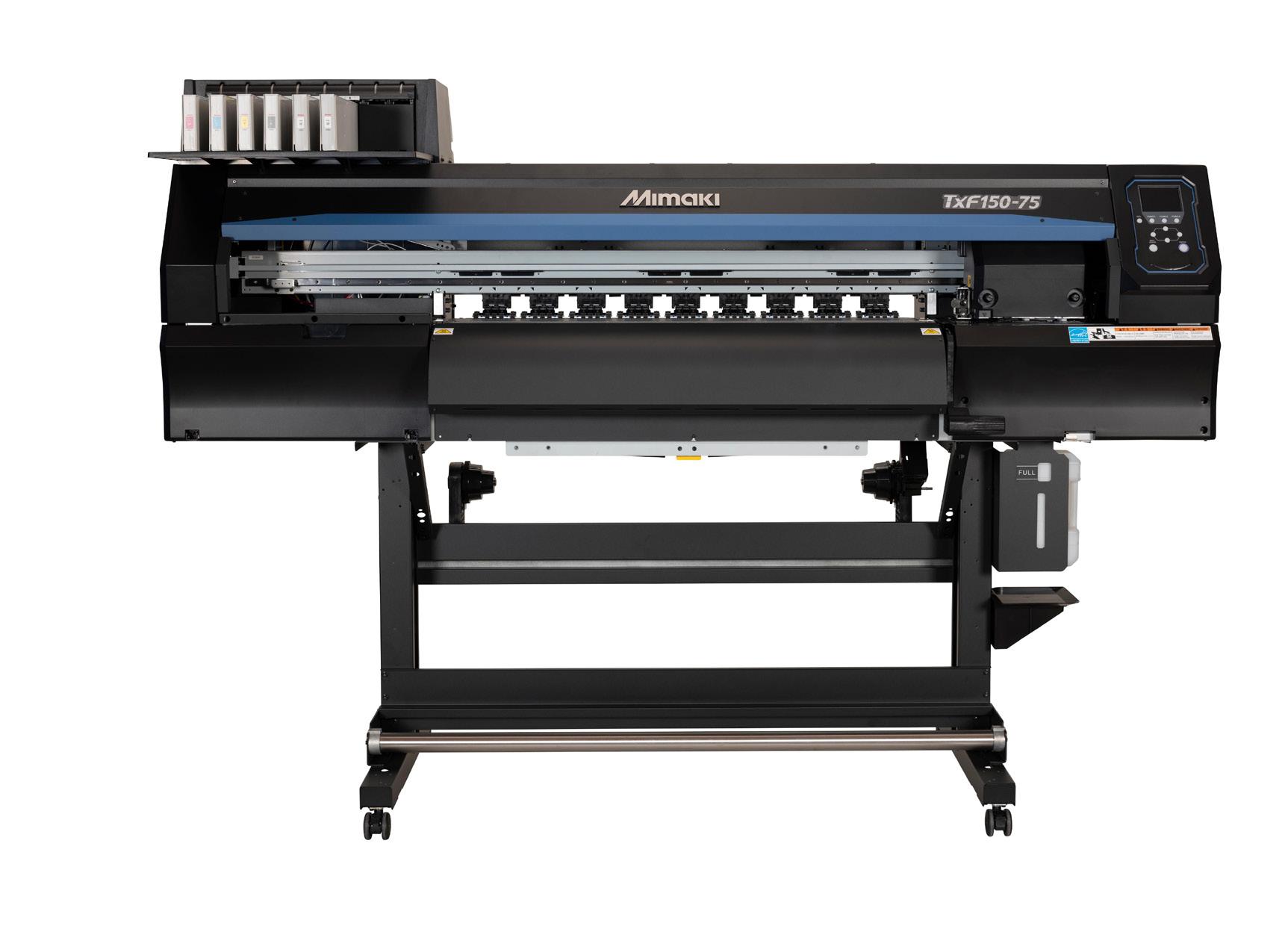
Direct-to-film (DTF) is not just for textile printing. It’s commonly used as a replacement or a complement to direct-to-garment printing.
Mimaki used the Sign Expo to announce its new TxF150-75, the company’s first foray into DTF. The TxF150-75 offers a maximum printing width of 80cm for DTF transfer sheets using its PHT50 heat transfer pigment ink comprising CMYK+W. The TxF150-75 is said to produce up to 22 T-shirts an hour or 210 “logo” shirts an hour, the former featuring higher coverage than the latter.

Roland highlighted their full gamut of offerings including the latest additions to its TrueVIS line of UV printer/cutters—the LG Series UV printer/cutters, MG Series UV printer/cutters, and AP-640 Resin printer. The latter is a challenge to latex for printing wall décor, indoor signs, retail displays, stickers and decals, banners and posters, vehicle wraps and other applications on a wide range of substrates.
One major new product announcement, also shown for the first time at the Sign Expo, was the brand new VersaOBJECT CO line of hybrid UV flatbed printers.
A replacement for the VersaUV LEC2 S-Series, the VersaOBJECT line is designed to print on a wide variety of flat substrates as well as 3D objects. It is currently available in two widths, 30 and 64 in., as well as three bed lengths. The printer is belt-driven, which allows for faster loading/unloading, and the unit can print on roll-fed media as well as rigid materials and objects up to 7.87 in. high. Complementary Rotary Rack accessories allow for printing on cylindrical objects like water bottles and YETI cups.
Konica Minolta AccurioWide 250 hybrid wide-format inkjet printer Mimaki TxF150-75 DTF printerRoland also recently launched its own DTF printer, the VersaSTUDIO BN-20D Direct-to-Film System, allowing users to create custom T-shirts, tote bags, aprons and other textile- and vinyl-based applications with no weeding or masking required.

A company that I have been aware of for literally decades but admittedly never associated with display graphics is Sherwin Williams. They were using their appearance at the Sign Expo to promote their solutions for the sign industry, which include an extensive portfolio of sign coatings such as the Genesis Lustral and Lustral Translucent topcoats, the Kem Lustral topcoat, a line of
metallics that can be specified using Sherwin Williams’ Metallic Sign Fandeck, and a variety of other materials for sign painting, channel letters and other signage applications.
The company also offers its ColorReader Pro, a handheld spectrophotometer that can compare a sampled color to Sherwin Williams’ Aurora Color System to find the closest match.

SAi, makers of Flexi, the design application for signmakers, used the Sign Expo to announce a new training program for the sign manufacturing industry. Expanding its Adendo.com platform, Flexi users can access online and in-person education, training and support.
Online “e-courses” provide extended, pre-recorded and self-paced training modules. Some currently offered include “Designing Vehicle Wraps in Flexi,” “Learn Flexi in 3-Hours” and “Full Flexi Training with Mark Rugen.” New courses will be added over time.
Adendo’s “Virtual Training” allows sign companies to book live online training sessions that can last from 30 minutes up to several hours to address specific needs. There is also an on-site option, where Adendo experts will come out to a shop and conduct in-person training or problem solving. For more info, visit https://adendo.thinkific.com/collections.
Next year’s ISA Sign Expo heads to Orlando.
Roland VersaOBJECT CO wide-format printer By Jenn Matt
By Jenn Matt
In conversations with a label converter recently, the general manager told me that more than once in the last few years key employees had voiced the core belief that “this plant wouldn’t run without me.”
Now, you can take this statement a lot of different ways. My initial reaction is concern for the business, because the employee who says this is both likely a key player and potentially a risk.
In business process consulting, I’m always looking for where information flows into a dead-end. To say it another way—I’m looking for where your business processes would stall when certain individuals are not present. A business process should flow and continue to flow even when people are interchanged.
I know, I know: good people are hard to find, and when your key people are out your plant doesn’t run as well. That is what I’m trying to prevent.
Your business must be run by a system. That system must be software-based, where you can programmatically give individuals the access. The right people should have access to the right information at the right time.
If your business primarily runs on offline spreadsheets, email, word of mouth and written notes on job tickets—there are a lot of dead ends in that business process. The business process resides in your employees’ heads. This is the environment where employees are the system that runs the business. This creates an environment where you can be really good on days when everyone is firing on all cylinders and really bad when key employees are out or simply overwhelmed.
The goal of business process consulting is to create a process that is software-driven so that the intellectual firepower of your employees is there to manage exceptions. This process runs predictably and transparently because all the employees know their role, all the data is in the system of record, and the processes are well defined. The system runs your business, and your employees run the system. Your excellent employees are then focused on improving the processes and handling exceptions.
When you don’t have systems, your excellent employees are required to manage all jobs because they are functioning as the system.
Software is better at handling predictable business processes than humans. We get bored, tired and generally forgetful. Software doesn’t forget and is predictable. The intellectual firepower in your employees gets embedded into the system of record, and your business process becomes boring and predictable (which is very nice).
This article will cause some consternation with folks who want to celebrate their ability to critically think about every job. It makes you feel smart to have to solve challenges on every job to make the ship date.
My first job in the printing industry was at a 24/7 retail Kinko’s location. I loved the sense of urgency from our customers and the sense of accomplishment when we hit their deadline. We had
one of the most profitable stores in the country.
I remember a strategic consultant visiting the store and telling me what I was doing was not replicable, because it required me! I took it as a compliment and then realized years later, I was the employee who believed “the plant won’t run without me!”
I have become a big proponent of boring processes that work. I like when software releases happen before I get up in the morning, and no issues are reported because we followed a checklist that we’ve been iterating on for years.
There are enough moving parts to the economy, the market, the supply chain and customer preferences to make work not boring. I see business process consulting to make as many things as possible boring, predictable and consistent so we have breathing room to think strategically about all the things that are changing outside of our control, and how to best evolve to optimize our business around them. Your employees are critical to your success. Processes are just as critical. Employees who are asked to be heroic daily get burned out. Let them chill out on the normal jobs that should move through your plant in a boring way, because you have a system that runs your business, and people who run the system.

According to Explorer Research, a company that conducts packaging research with over 50,000 shoppers each year, a typical television ad has 15-30 seconds to capture your attention, while a print ad has about 3-5 seconds. However, packaging has less than 2 seconds to capture a shopper’s attention.

So, how do you capture the attention of your prospective customer? More importantly, how do you get them to pick up the package off the shelf and then take it home?
This is the first moment of truth, and according to Proctor & Gamble, the most critical, and where you should focus your efforts on developing or reinforcing a perception and converting potential customers into actual customers.
There has been a wealth of research done with some valuable insights on creating perception.
Perception refers to a psychological process, which includes context, connection, meaning, past experiences and memory as primary factors. To perceptually interpret the environment around us, it requires our sight, smell, taste, hearing and touch.
When a stimulus is given, each of these senses will respond. The responses are then forwarded to the brain via the central nervous system. The
combination of this sensory input and the primary factors can help drive perception.
If a package is already in a container, smell, taste and sound are probably out of the question as a deciding factor. That leaves sight and touch.
In the case of a package, but not necessarily a label, the shape, size or weight could be a deciding factor. However in the case of both, color and visual appearance are essential.
Color is an important and very influential factor. Color creates a link to emotional sensation. Some colors induce a feeling of pleasure in the observer.
For example, warm colors like red, orange and yellow often evoke feelings of happiness, optimism and energy. However, they can also have an attention-grabbing effect and signal danger, or make you take action. Red can also increase a person’s appetite.
Cool colors like green, blue and purple are usually calming and soothing but can also express sadness. Purple is often used to help spark creativity as it’s a mixture of blue (calm) and red (intense). If a company wants to display health, beauty or security, they will usually incorporate these colors.
Metallic colors offer additional emotional sensations. For example, gold is the color of success
and affluence, while silver is a gentler color than gold that evokes grace and elegance. Bronze is a mixture of copper and tin, which exudes the aura of nature and ideas of experience, growth, strength and security.
It must be remembered, however, that the psychological perception of color is subjective, and affected by the primary factors of context, connection, meaning, past experiences and memory.
Once the customer picks up the package, how do you build on that visual to further solidify perception?
As early as the fourth century B.C., the Greek philosopher Aristotle proposed his theory about sensation hierarchy. He stated that our five senses are ordered hierarchically with touch at the beginning.
“Touch provided an authentic picture of the intrinsic nature of the object,” Aristotle argued.
For instance, the soft fur of a kitten would be indicating its inherent soft character.
While touch is classified as one of the five senses along with sight, smell, taste and hearing, it is the one sense that has an essential role among all of the sensory experiences. Touch is one of the hardest senses to manipulate or counterfeit and the sense that customers trust the most. Using color to establish an emotional connection along with touch provides a two-pronged approach to-
ward developing a strong perception and perhaps event solidifying the first moment of truth.
A 2013 study by the Foil & Speciality Effects Association used eye-tracking devices to measure the impact of embellished versus non-embellished packaging. They found embellished packaging was identified 45% faster and held a shopper’s attention 18% longer than non-embellished packaging.
In 2017 they conducted a follow-up study to determine whether embellished packaging increases a customer’s willingness to make a purchase by comparing a made-up brand, Zapotec, to name-brand packaging on a retail shelf.

The Zapotec packaging was prepared in three iterations, with both a control and an enhanced package: a printed Zapotec package with a printed red emblem; a printed package with a red foil stamped metallic emblem; and the same printed package with a gold foil stamped metallic emblem.
Using eye-tracking devices that track actual pupil movement, the study analyzed how long it took the 180 participants to find a package on a shelf and how long they fixated on an item. The results showed foil stamped cartons attracted consumer attention and led the shoppers to purchase the unknown coffee brand just as often as name brands Maxwell House and Green Mountain Coffee, and more frequently than Eight O’Clock.
There is no doubt that embellishment adds value to the printed package. Especially with the more recent introduction of digital embellish ment technologies designed to complement dig ital printing and packaging technologies.

According to a Keypoint Intelligence-InfoTrends study, “Beyond CMYK: The Use of Special Effects in Digital Printing,” print enhancement volume will grow at a CAGR of 27% through 2020. Profit mar gins on digital print enhancement range from 50% to 400%, and print buyers will pay a premium of 24% to 89% over CMYK for print enhancements. tal embellishment offerings for labels and packaging.
Glossy coatings are applied to make printed images pop and to protect them against fingerprints, scratches or smudges. Coatings also protect labels and packaging as it works its way through the manufacturing chain to the store shelf and ultimately, home.



These days, most coatings are aqueous/water-based for maximum environmental friendliness. Coatings are available in satin, gloss or matte finishes, as well as soft lamination, which makes a printed piece feel like velvet. Coatings can be applied to selected areas of a package as an integral part of the design, or to the entire package.
UV curable coatings dry instantly under UV lamps and can be applied in thicknesses that stand in high relief on a package. This creates touchable textures that imitate mechanical embossing.

printheads, or clear polymers using the electrophotographic processes
• High-build polymer dispersion cured with UV
• Metallic foils
• Metallic “nano” particles in a varnish or polymer suspension
• UV curable resin for creasing/embossing
• Lasers for die cutting

Die cutting is when certain areas are cut out of a substrate. It’s used to cut the shape of a label or box, or it can also be used to introduce an intricate design like a filigree pattern.
Traditional die cutting is performed by creating dies in specific shapes that will be cut, or die plates that are pressed into the substrate to cut out the design. Digital die cutting is when a laser beam cuts out the desired shape. Digital die cutting provides a greater pattern intricacy and eliminates the cost and time of producing dies and plates (which makes it an economical choice).
In packaging, die cutting can be done inline using rotary and semi rotary die cutting stations and
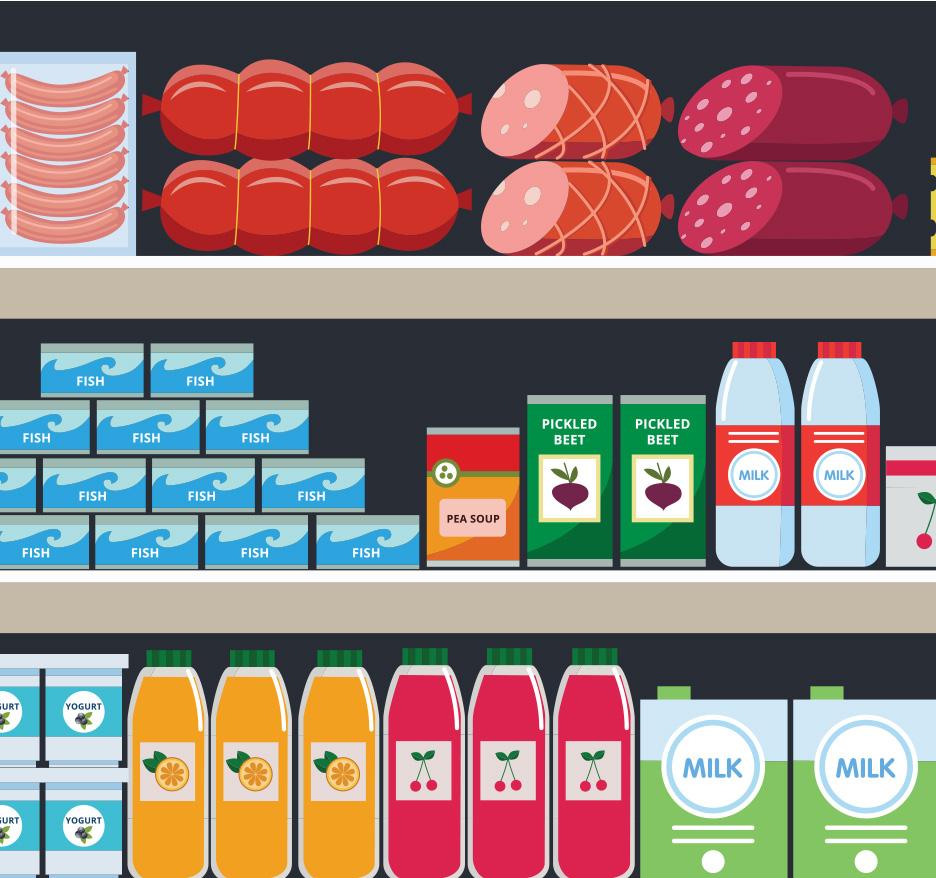

laser technologies. Or it can be used offline with flatbed conventional dies and die cutters. These decisions are usually product based.

Embossing creates a raised pattern or design in the substrate that is pressed onto a page instead of cutting it out. Debossing depresses the image into the substrate for a concave impression. This embellishment requires the manipulation of the substrate using a “die” and a mirror image “counter.”
In addition, dies can be used in a similar fashion in digital decorative die cutting, which could be as simple as a window in a page to see through. This type of die cutting uses a similar principal to embossing and debossing, the difference being that with die cutting you are usually cutting through the substrate and not just making an impression in the substrate.
Foiling adds metallic finishes for an element of luxury and sophistication that catches the eye. For example, many wine labels use foiling techniques to add a touch of glamour and bling to the packaging. Foiling offers a wide array of metallic ink colors for a shiny, foil-like finish along with specialty elements for product decoration and/or security purposes. Foil can even be used in variable data printing so the treatment and color change from page to page.
Hot foil stamping, uses a painted carrier sheet, which when hot stamped with a die plate, impresses on the receiving media. These carrier sheets are coated with different colors including metallics, a release layer and an adhesive. In packaging, it is primarily used on folding cartons.

The introduction of cold foil printing or stamping made it even easier. In this process, an adhesive is printed using a normal printing plate or cylinder, the coated carrier comes in contact with the adhesive, and the metallic coating is pulled off the carrier and remains on the substrate.
Inks have expanded beyond traditional CMYK and Pantone special color formulations. There are new options such as fluorescent shades, scented inks, and metallic options, all adding other ways to affect that emotional sense.
Security inks to identify and trace brand piracy include biometric inks with DNA tags that verify if products are real, thermochromic inks that are visible or invisible at different temperatures, magnetic inks containing small iron oxide magnetic flakes, and infrared inks that can be viewed under an infrared light.
Inline embellishment in digital toner presses has evolved to address these new requirements for a wide range of metallic embellishments for design and security printing on labels and packaging.
Approximately 80% of all smartphone owners now have NFC readers in their hands, and as new applications emerge, usage in retail and packaging will continue to increase. While predicted for years, the use of NFC and RFID at the consumer
retail level with many new types of active and intelligent packaging is growing.
RFID in packaging is currently used for security to identify if a package has been opened or tampered with, as well as to collect market data and educate consumers through product interaction. It can also identify the condition of the food in the package.
There are many stand-alone digital embellishment devices, as well as some embellishment features integrated into digital presses or hybrid presses targeted at labels and packaging.

Press manufacturers now offer more embellishment operations in line to minimize handling and waste, and to keep turn times low for the increasingly short-run jobs. However, it’s really a decision based on the individual converter’s manufacturing products and processes. When does it make sense to create a complete purpose-built production line? In the case of labels and packaging, the large amount of finishing variants and packaging requirements dwarf those in commercial printing, so it may make sense to develop more purpose-built systems and components.
Today, different embellishment devices have different guidelines on how PDF files should be created, and different printing companies have varying workflows and ways of handling embellishment files. However, work done by the Ghent PDF Workgroup, which now is an ISO standard (ISO 19593-1), provides the basis for the recommendations that can be used to communicate specific requirements for digital embellishment. It also provides some best practices that can be achieved with standard desktop applications like Adobe InDesign or Adobe Illustrator.
We can expect to see more development in the area of embellishment technologies not just in labels and packaging, but also in commercial and industrial print as well. We can also expect to see increased adoption. While there are additional costs for embellishment, the incremental operational costs are far outweighed by the incremental value it can add to a printed product.
Whether it is all about design enhancement or security, the needs for embellishment today isn’t that different from what it was in the first century, adding awareness and value to content.
I would like to address your interests and concerns in future articles as it relates to the manufacturing of print, packaging and labels, and how, if at all, it drives Industry 4.0. If you have any interesting examples of hybrid and bespoke manufacturing, I am anxious to hear about them. Please feel free to contact me at david@ zwang.com with any questions, suggestions or examples of interesting applications.
 By David Zwang
By David Zwang
Flexible packaging is the fastest growing packaging application. Continued growth is projected for nearly all end-user markets from food, beverages and pet food to personal care, medical and pharmaceutical, and consumer products. Its projected growth rate to 2027 is at a CAGR of about 4.3%.
It is an attractive packaging format for many reasons. It minimizes package transport costs between converter, packer/filler, retailer and end user. It not only takes up less space than rigid packaging when empty, but it can also be constructed from roll materials at the filling location, thereby minimizing transportation of ready-formed packaging. It also offers product protection and the ability to reseal, reducing spoilage. Flexible packaging for food items often contains a barrier layer that extends shelf life, which reduces the amount of food waste associated with perishable items.
Globally, plastic-based flexible packaging accounts for around 93% of consumption, compared to paper-based flexible packaging, which accounts for just under 5%.
A survey of European consumers commissioned by Two Sides in 2020 concluded that 62% of consumers see paper
and cardboard packaging as better for the environment, while 70% of consumers surveyed said they were actively taking steps to reduce their use of plastic packaging.
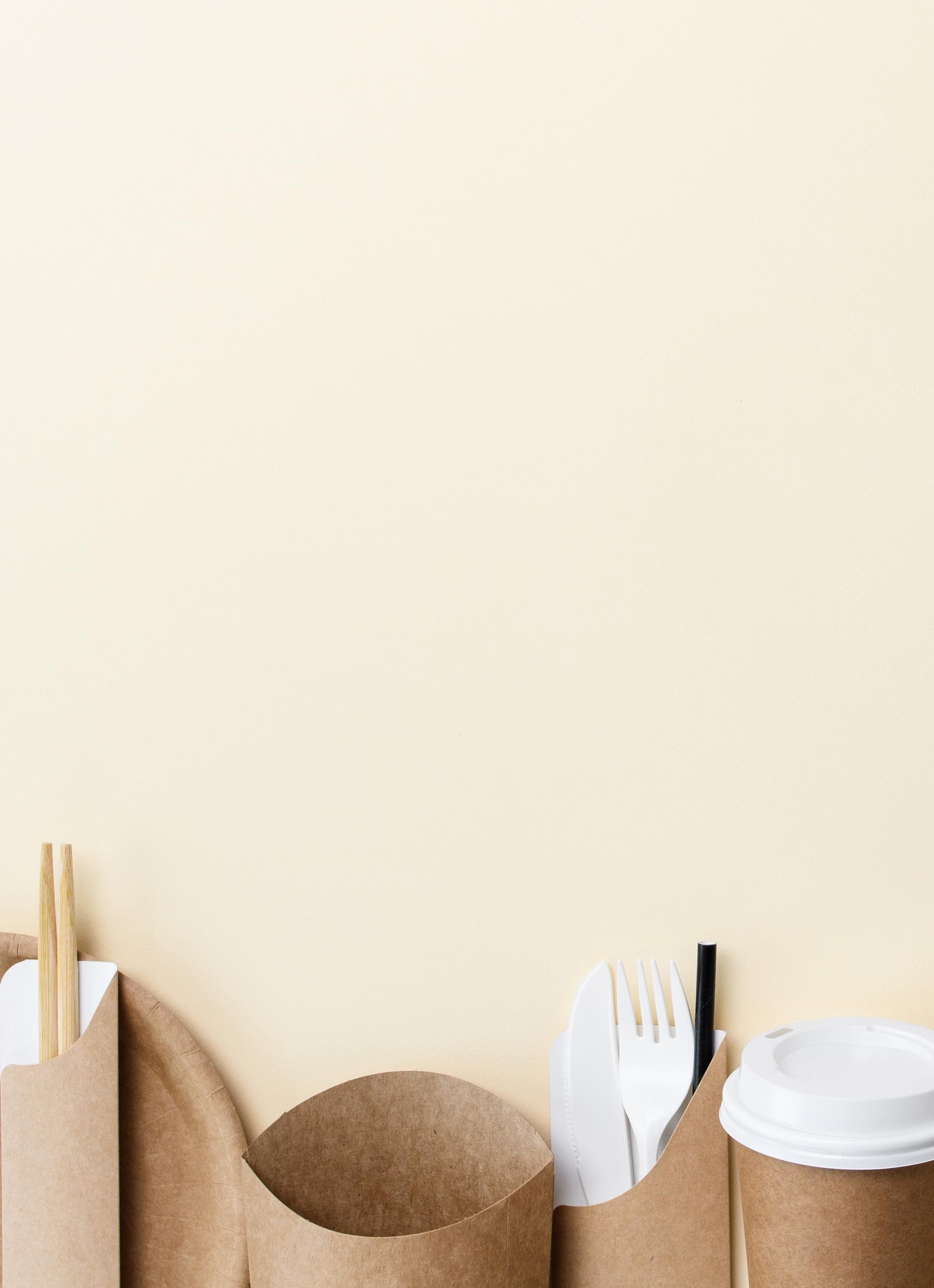
Historically, papers have been used in flexible packaging for many applications, including confectionery, pet food and dried food. However, with the increased scrutiny of plastic use in flexible packaging, there is an increased interest in moving from plastic to paper.
Plastic’s properties make it ideally suited for protecting products during shipment, but it is made of a non-renewable resource. While plastic can be recycled, it is currently difficult to achieve high levels of post-consumer recycled content in plastics due to post-consumer waste contamination. Paper is far more biodegradable than plastic and is easily recycled as it can be repulped, which gives it an environmental advantage as a substrate for flexible packaging.
Today, much of the paper-based flexible packaging is often laminated with plastic/aluminum or coated with resin, which makes it non-recyclable. Research has led some brands to increasingly consider replacing plastic and non-recyclable packaging with recyclable and compostable paper.
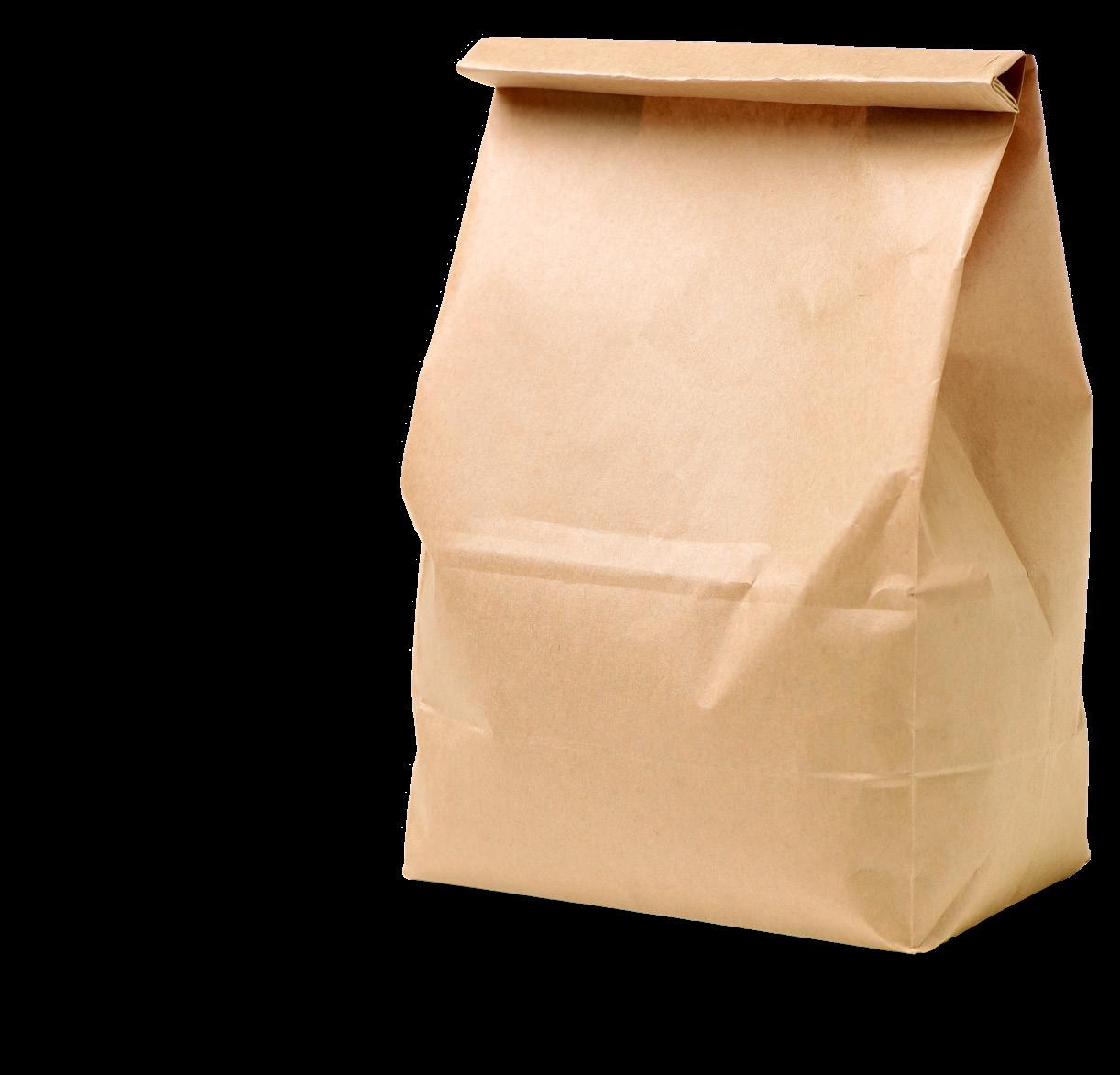

So what is required to treat the paper to maintain the important characteristics of protecting the contents yet still keeping recyclable and compostable characteristics?
In 2003, Simon Balderson founded the Sirane group in the UK. He is a scientist, specifically a physicist, and his background is mainly in electronics and packaging research.
Sirane is still very much a research organization with scientists and engineers developing packaging technologies. They are also the largest flexible packaging converter in the UK, with additional manufacturing plants in the Czech Republic, North America, South Africa and various other distribution hubs in Australia, Singapore and Dubai.
“Our main business area is flexible packaging, particularly in the plastic replacement area,” Balderson said. “We are very big in the board industry. We also have a decent size absorbency business around the world as well, and a number of other smaller interests.”
The one central theme of Sirane’s research, development and manufacturing is “a huge thirst for innovation, a huge thirst for differentiation, plus some very strong environmental drivers towards reducing packaging waste and extending shelf life,
‘Blue Planet’ that really set things off.”
They researched paper as a plastic alternative for flexible packaging for a while, but the technologies were not really there beyond what was being done in universities. There was some early development coming from research centers in Japan, Germany and the United States, such as that coming from DuPont, with some interesting coatings. They were based on polysaccharides, non-chain sugars or cellulose-type materials. With these coatings, you could create water-based emulsions.
Sirane started putting them down onto papers and found that it would give the paper more strength, more barrier, more grease resistance, more moisture resistance, and, critically, in some cases a good heat-seal ability. That was important, because in flexible packaging, the problem with paper was always to make it heat sealable.
Since then, more materials have come onto the market, some of which are water-based, plasticfree bio coatings. These will allow you to do things
with paper to make it much more acceptable as a substrate to replace plastic in particular barrier properties, moisture-resistance properties, and heat-seal ability.
A lot of new technology is also coming out from the paper industry, like materials from cellulose, and, as you can imagine, there are a lot of materials in the natural world.

Some of these are natural gums or what you might call “natural poly.” Agar is a good example; it is a plant-based material, but it’s a gum. We used to make adhesive from it before plastics came along, and now we’re going back to them again.
Since the paper industry is not big on small-batch coating, Sirane is buying the materials in bulk liquid form, mixing their emulsions, and then coating them on the papers. Today almost 80% of Sirane’s flexible packaging business has moved from plastic to paper, and all of their flexo printing inks are water based. Their latest addition, an HP Indigo 200K, uses food-compliant toner and prints on the coated papers.
Sirane is not the only company beginning to look at recyclable and compostable papers for flexible packaging. Recently, SAPPI put up a website to introduce sustainable paper-based flexible packaging, packmockup.com, where you can order a packaging mockup to see how it works with your product.
Xeikon introduced their Titon CX500t specifically designed to run paper-based flexible packaging. They have been working with the Koehler NexPlus line of sealable substrates. This line is produced from at least 95% virgin pulp-based material combined with a natural and biodegradable monomer and seal coating. This provides a barrier for aromas, grease, oil or water vapor and barriers for gases, which are combined with the paper’s own characteristics in a 100% recyclable substrate.
As more consumers and CPGs take up the sustainability pledge, we will see more conversion from plastic to paper based flexible packaging.
Today almost 80% of Sirane’s flexible packaging business has moved from plastic to paper.







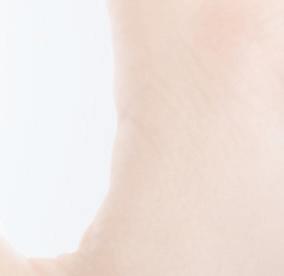
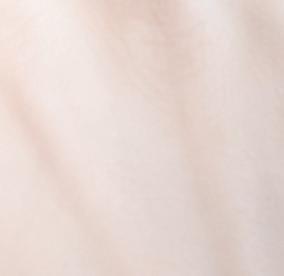


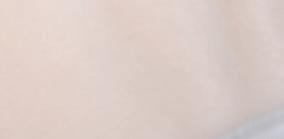



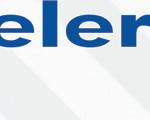



As commercial printers, in-plants, and sign and display graphics printers look for ways to expand their businesses and offer new products and services to their customers, expansion into the textiles industry looks like an interesting opportunity.
In the sign and display graphics business, many operations are already printing on textiles for all kinds of soft signage—an increasingly popular alternative for trade shows, street signage, and flags. For them, a next logical step might be to explore direct-to-garment (DTG) printing.
This involves transferring images to blanks—Tshirts, blankets, pillow coverings, tote bags and a plethora of other products. This can be either DTG or using a transfer technology such as dye sublimation or direct-to-film (also referred to as digital transfer film).
Printing on or transferring images to blanks is a simpler process than printing direct-to-fabric which must then be cut and sewn. This is, of course, a much more complex process with a steeper learning curve. And while much of the direct-to-fabric process can take advantage of automation, it still requires humans at various stages, including picking garment pieces off the cutting table in the proper order for finishing, and even more importantly, sewists—a skill set that is lacking in North America.

Those who are already printing on textiles for soft signage purposes have experience understanding what fabrics work with which inks and the general basics of fabric printing.
Historically, this has been done using screen printing. However, as in the world of offset printing, screen printing is best suited for long runs with a relatively limited number of colors. It requires set up and makeready, including creating color-separated stencils on fine mesh screens, one screen for each color. A thick ink is then pushed through the image area and lies on top of the fabric rather than being absorbed into it.
Since this is an analog process and requires setup time and materials for each job, it is not a viable solution for one-offs, jobs with too many colors, or anything including variable data, although some rotary screen printing equipment does offer a digital station that can incorporate some variable data.
With digital DTG, as with all digital printing technologies, you can print in quantities as low as one, and a variety of inks are available depending on the fabric type.
DTG devices are available from Epson, Kornit, Ricoh, Brother, M&R and Aeoon. Prices range from sub-$15,000 to the high six figures. Plus, there are a plethora of companies that make blanks of all types available for use with this technology.
For commercial printers and sign shops looking to expand their offerings and develop new revenue streams, printing on blanks, whether directly or through a transfer process, is a logical ancillary application.
For example, if a sign shop is producing banners for a trade show, they can also offer to produce T-shirts, hats, tote bags and other materials. Not only does this offer new revenue streams for the printer, it makes it much easier for the exhibitor, saving time and energy.
DTG production also offers the opportunity to take advantage of the potential for personalization, since you can cost-effectively produce a quantity of one.
“In all parts of life, consumers are looking for personalized experiences,” according to FESPA. “Statistics show that 80% of consumers are far more likely to buy from a company that offers a tailored experience. In addition, when they get a personalized experience, 44% of consumers become repeat buyers, 39% of consumers tell family and friends, 32% of consumers leave a positive review, and 22% of consumers post on social media.”
Another means of digitally printing on fabric that is gaining in popularity with solutions from companies like Epson, Ricoh, Roland, Mimaki, DTG Pro, Polyprint and CobraFlex, is digitally printing direct-to-film for transfer to blanks or other fabrics.

There can be some confusion with the acronym—DTF sometimes means direct-to-fabric. But in this article, DTF refers to direct to film or digital transfer on film.
One advantage of DTF printing is that the consumables—PET film, water-based pigment inks and powder adhesive—are common materials that are used in the analog DTF process as well,
keeping those costs in line due to scale. One disadvantage is a difference in hand feel for printing on garments.
DTF is best suited for smaller graphics like logos, for products like tote bags, or for printing on hard-to-access areas like sleeves, with which standard DTG printers have difficulty. It is not suited for printing large graphic areas on apparel, but could be used for some décor applications where hand feel may not be as important. Smaller images can be ganged on a sheet.
In the DTF process, an image is printed on a thin film, and an adhesive layer (usually a powder) is added then cured. The film can then be used immediately or at a later time, since the adhesive is not activated until heat is applied.
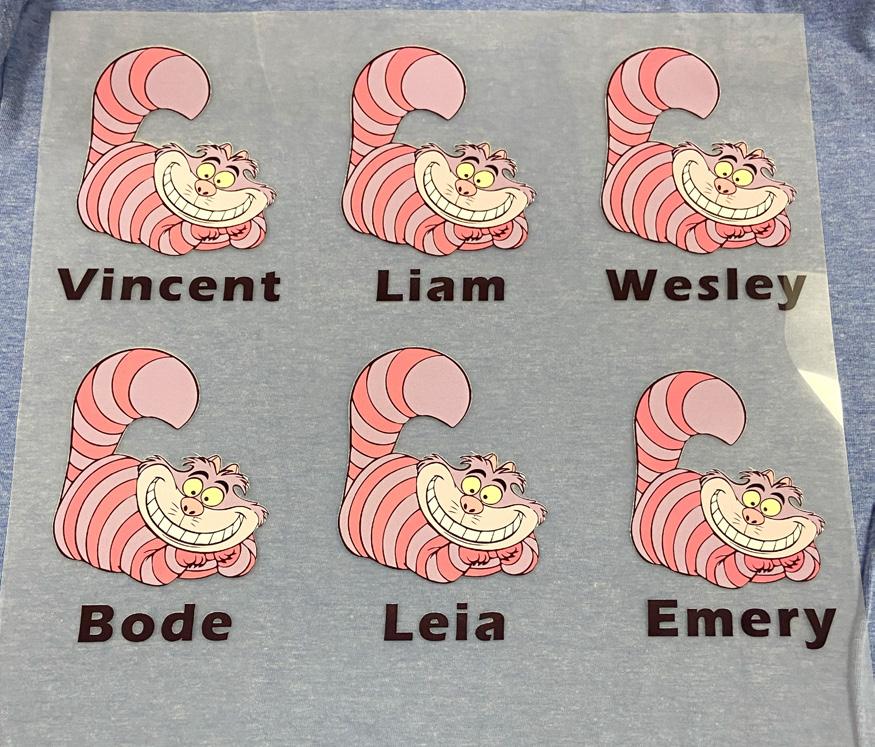
Unlike DTG, where the ink is absorbed into the fabric, with DTF, the image lays on top of the fabric, accounting for the difference in hand feel. Also, the image can be applied to almost any fabric, including both natural fibers like cotton and a range of synthetics. Most DTG printing requires the use of polyester or polyester blends.
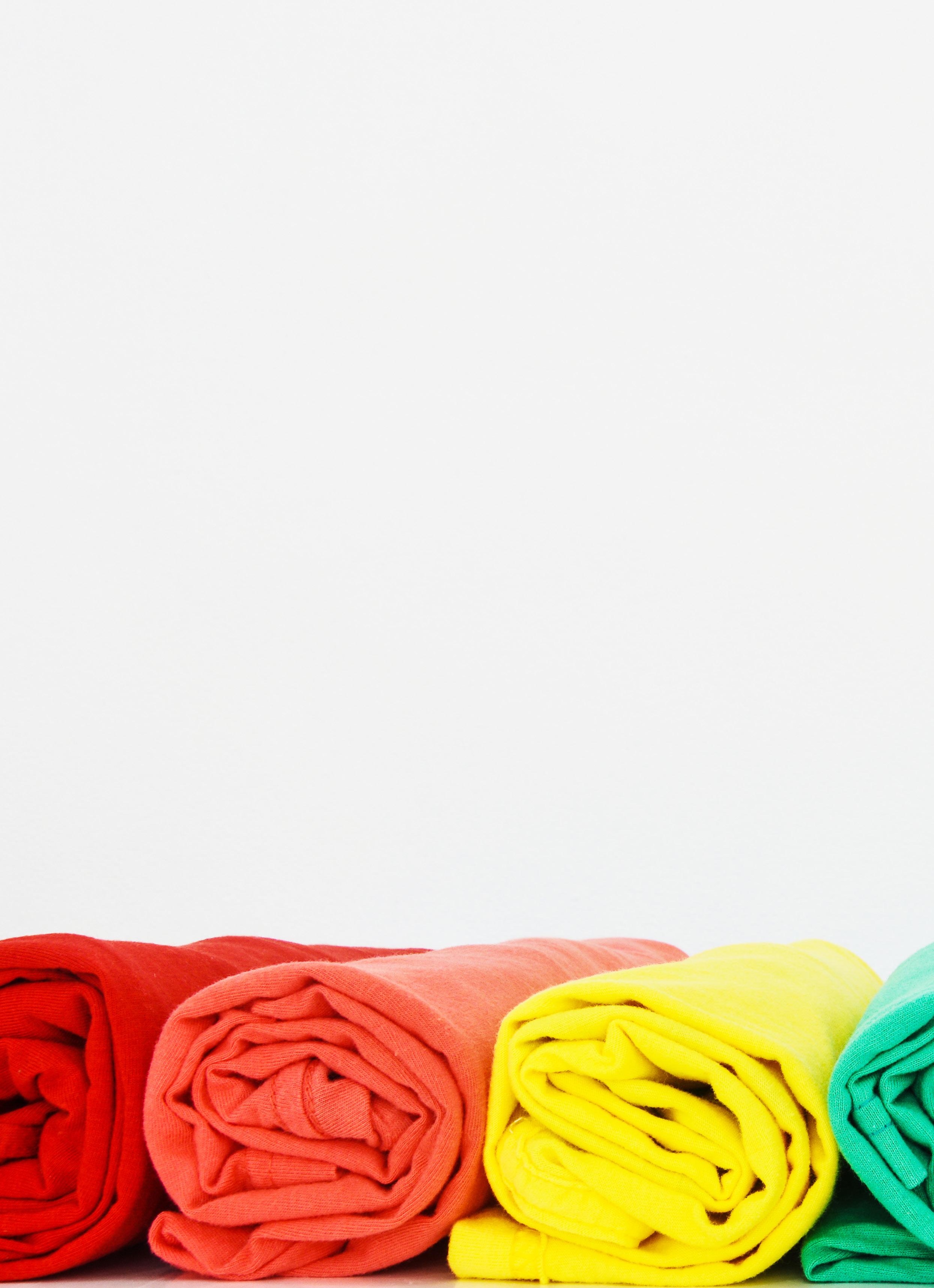
According to research firm Keypoint Intelligence: When compared to DTG printing, DTF offers the ability to avoid fabric pre-treatment, which is often required when printing with DTG. While preparing
the image for print is particularly important, applying the hot-melt adhesive is equally so with DTF; it uses a hot-melt powder made of polyurethane resin ground into adhesive powder. DTF offers the ability to decorate a wide range of fabrics, does not require fabric pre-treatment, is durable with great elasticity and stretchability, and is often a cheaper and faster alternative.
A more recent development is the availability of hybrid printers that can easily switch between DTG and DTF. Both processes use the same ink; the only difference is whether a garment is placed on the platen, or a sheet of film is fed into the printer.
In the case of film, the image must be reversed in the RIP or in prepress so it applies correctly to the substrate. At the recent ISA show, Epson showed an update to its SureColor F2100 DTG printer that offers this hybrid approach. Ricoh also offers a hybrid machine in two models, the Ri-1000 and Ri-2000 printers, a result of the company’s acquisition of Anajet.
Another entry to this hybrid market is Brother, with its GTX pro B printer. We expect to see more entrants jump into this market as demand grows, perhaps at the upcoming PRINTED United show in the fall.
We can’t fully discuss this topic without also bringing in digital dye-sublimation printing. This is a technology that has been around for a long time, in both analog and digital forms. There are a number of printers on the market, with a wide range of prices, that can print on a special transfer paper with the image being applied to the fabric with heat or calendering.
Some printers, like the EFI VUTEk FabriVU 340i+ or the DURST P5 TEX iSUB, have calendaring inline, which can be helpful for companies that have limited floor space.

It should be noted that these two printers are direct-to-fabric, not direct-to-garment. However, the transfer paper can be used to transfer images to almost anything—including the types of blanks we have been discussing: mugs, water bottles and my favorite, dog dishes. In this case, the inline calendering is simply bypassed.
Like printing to film, prints to transfer paper can be applied immediately or stored for future use.
According to Grand View Research, it was estimated that in 2022, 52% of all digital textile printing used dye-sublimation inks, making them the largest ink type by usage in the digital textile print sector.
In textiles, this process is suited for transferring prints to items comprised of polyester or polyester blends.

As the commercial printing market continues to contract, and with increased competition in signs and display graphics, adding printing on a variety of blanks is a natural addition to most product portfolios. Entry into the market requires a few new investments, but there are many affordable options and a clear migration path as volumes grow.
If you head to PRINTING United in the fall, be sure to take a look at the many suppliers that offer components that enable the addition of these products, ranging from blanks and fabrics to heat presses and printers.
Epson F2100 printing DTG on a black shirtPlastics—we love them and we hate them. But there is no denying the fact that all of us use plastics every day in one way or another. It’s almost impossible to avoid. And far too much of it ends up in our waterways, landfills and the sea. Plastic pollution is the second largest environmental problem the world faces after climate change, and the United States is leading the way.
“On average, every American generates 130 kilograms (286 pounds) of plastic waste per year,” according to data from Phys.org, “with Britain next on the list at 99 kilos per person per year, followed by South Korea at 88 kilos per year.”
It’s highly unlikely that people are going to stop using plastics. Sure, some of it is recycled, but not much.

According to the World Economic Forum, only 5% to 6% of plastic waste generated in the United States was recycled. And even those attempts are sometimes stymied by disasters like the fire at an Indiana recycling plant that caused evacuations, while emitting toxic smoke. It continued to burn for days.
That’s why I was so interested to learn about Solutum. Based in Israel, with plans to expand operations to Europe and North America, Solutum is a Cleantech company on a mission to reduce plastic pollution by providing sustainable alternatives to single-use plastic. The company has created a revolutionary compound that can be engineered to create a range of flexible packaging with versatile end-of-life options. The most intriguing option is to simply dissolve it in water.
I spoke with Sharon Barak, the company’s Founder and CTO, to learn more about this innovative approach to solving the plastics problem. Barak is a chemical engineer by trade, and has held several senior lab and R&D positions, most recently in the plastics industry.
“I decided to start the company when I worked at the plastics company,” she said. “I realized two things. One, we are living on plastic, basically. We call it the plastic era. Everything around us is plastic. And there is a good reason for that, right? Plastic is a very comfortable material. You can manu-
Solutum offers a new approach to reduce plastic waste.
facture different kinds of forms out of it. It’s cheap, it has great properties. So it’s really out there.
“But the second thing I realized is it creates one of the biggest problems we have today, the second biggest environmental problem we are facing right after climate change, both of which are very much connected.
“So having realized those two things made me actually think, ‘OK, we have so many materials in our planet, why not try to find a solution, a material that functions like regular plastic, but won’t harm the environment, will actually disappear from the environment?’”
While the origin of the material used in the Solutum solution is important, what is more important to Barak is what happens to it at end-of-life.
“About 400 million tons of plastic are manufactured worldwide each year, and it’s just accumulating on our planet,” she said. “So my main concern is how to eliminate plastic waste.”
Barak notes that the Solutum technology is based on either natural gas or fossil fuels. In the future, she says, it could also be based on bio-materials. She says the plastic they produce has the same properties, sometimes even better properties, than regular plastic. But at end of life, it biodegrades in nature.
“The reason our plastic can biodegrade,” Barak said, “has to do with the composite and the structure of the polymer and the way the bonds between the carbon and other materials function. With regular plastic, the bonds are so strong that bacteria that occur in nature cannot break them down. With our structure, the bonds are weak enough so that bacteria can just break it down and not create microplastics. After it is broken down, what remains is carbon dioxide and water. There are no microplastics remaining. But at the same time, these plastics deliver the same or better performance than regular plastics.”

“About 400 million tons of plastic are manufactured worldwide each year, and it’s just accumulating on our planet.”
The company is currently focused on flexible packaging, where there are products like polybags, stretch film and shrink film, which Barak believes are the number-one contributors to the plastics problem in the environment. They are not being recycled, and they cause plastic leakage.
Barak said that the company is already working with large brands, such as a consumer goods company and a well-known beverage company.
“These are our design partners,” she said. “We are developing products with them, testing them in the market, and we are already at scale with our production.”
She also makes it clear that Solutum is not manufacturing the final product.
“But we know how to convert our raw materials into products, and we emphasize this when working with our partners.”
The materials produced by Solutum fit seamlessly into the supply chain, and work on any existing machines/extruder lines, etc. This is highly important in order to scale up rapidly and efficiently, since it won’t require additional investments in equipment by the manufacturers. They simply replace the raw materials with those from Solutum.

In terms of end-of-life, Solutum is looking at two different options. One is industrial use and the other is end users.
“For industrial recycling,” she said, “it is easy to collect and to send it to the facility that will take over the process. Our material can be sorted from other plastics and simply be put into water to dissolve. For end users, there is an educational process that needs to take place.
“One example is with a large consumer goods company—they are using our material for their merchandising bags, and they print a QR code on the bottom of the bag. You can scan that at home to see how you can responsibly get rid of it at end of life, whether it is in the sink or the dishwasher. If the end user simply puts it in the garbage, it will end up in a waste processing facility where it can be composted, or it will biodegrade in the landfill. Once there is enough volume in the market, it can be collected in
its own stream, recycled, and given a second life.”
In some ways, this sounds too good to be true. But let’s hope this turns into a high-volume operation, and fast, since we are literally drowning in plastic. Working with brands is a big first step; but the company also plans to work directly with large converters as well as companies like TOMRA that make waste-sorting equipment.
If you are a flexible packaging converter, now would be a good time to find out how you can gain access to the raw materials for use in your manufacturing operation.

If you are a brand that is concerned about plastics pollution—and every brand should be—I’m sure Solutum would love to hear from you.
As a consumer, you can do your part by educating yourself on this innovative approach to plastics, and push information to your favorite brands.
Modern recycling plant for sorting and recycling household and other wasteOne fine Thursday evening in early December I retrieved the day’s mail, not on my phone or my desktop, but from my real mailbox, on a post at the end of my driveway.
It would be the last time I would do so for five days. Oh, I checked every day, but no mail was delivered. It wasn’t just me; my neighbors didn’t get any either. Finally, on Tuesday, we had not one, but two separate deliveries of massive piles of mail.

It was a curious way for our local post office to celebrate the eightmonth anniversary of the enactment of the Postal Service Reform Act, which affirmed that by law the U.S. Postal Service must deliver mail six days per week.
“Apparently they can’t find mail carriers to hire,” said Jeff Castle, our local township trustee, after he spoke with our postmaster.
The main entrance to our business is locked on Saturday, but we have a mail slot as required by postal regulations. A couple years ago our Saturday mail delivery became erratic until it tapered off to maybe once every month or two.
Want to complain? The U.S. Postal Service’s communication system makes it almost impossible for the average postal patron to contact their local post office by phone or email.
“I’ve sent messages to my local post office a few times when deliveries seem amiss and have received prompt and polite responses,” said Cindy Walas.
Ah, but Walas is seasoned print communication professional with a thorough knowledge of things postal. The average consumer has neither
the time nor the inclination to break through the communication walls that the USPS seem to have intentionally constructed.
Rod Lowe, whose direct mail expertise far exceeds mine, lays blame at the feet of the current postmaster. Perhaps, but I must observe that these problems have been decades in the making, which brings me to my point.
Every time I write about postal woes I strike a chord, receiving spirited responses from printers, mailers and even postal carriers. I suggest we all need to step into the shoes of the average postal recipient who is frustrated and puzzled by postal unreliability, and who is increasingly offered alternatives to mail that are lower in cost, easier to use, and in their perception, more reliable.
My neighbors don’t give a hoot about presorting or co-mailing, but they are annoyed when the mail arrives after sunset, or not at all. They perceive that Amazon’s own trucks deliver packages same day. However, if the same package is shipped by USPS it takes longer, and arrival is less predictable.
The businesses in my industrial park may use direct-mail marketing, but they are frustrated when checks are lost in the mail, which happens much too frequently.
Lately I’ve noticed a trend: savvy firms are instead touting safety, security, convenience and reliability as reasons to switch to paperless communications. These will be harder to rebut.
As for me, I’m doing my part to promote print. The USPS needs to do theirs.
Premier’s story begins with the dream of Arnold Wheeler. Arnold worked in the print industry for years, and he could see that something was lacking: service. That’s what he set out to change.
Frank shows two small books from the 1800s set in two- or three-point type. He compares the type in them to the backs and sides of pharmaceutical packaging today.

Jakob Stone, a 20-year-old digital embellishment operator at Elite Print Finishing shares his experiences and insights into the world of digital print finishing.
Warren talks with Taylor Sellinger, partner and general manager at Premier Graphics, a wide-format printing and installation company based in Vancouver, B.C.





Graphic Whizard’s new machines will have more capabilities while taking up less floor space to to enhance productivity in the cutsheet market.
Tekra offers a variety of film and screen options for different looks from light boxes and retail signages to menu boards.

